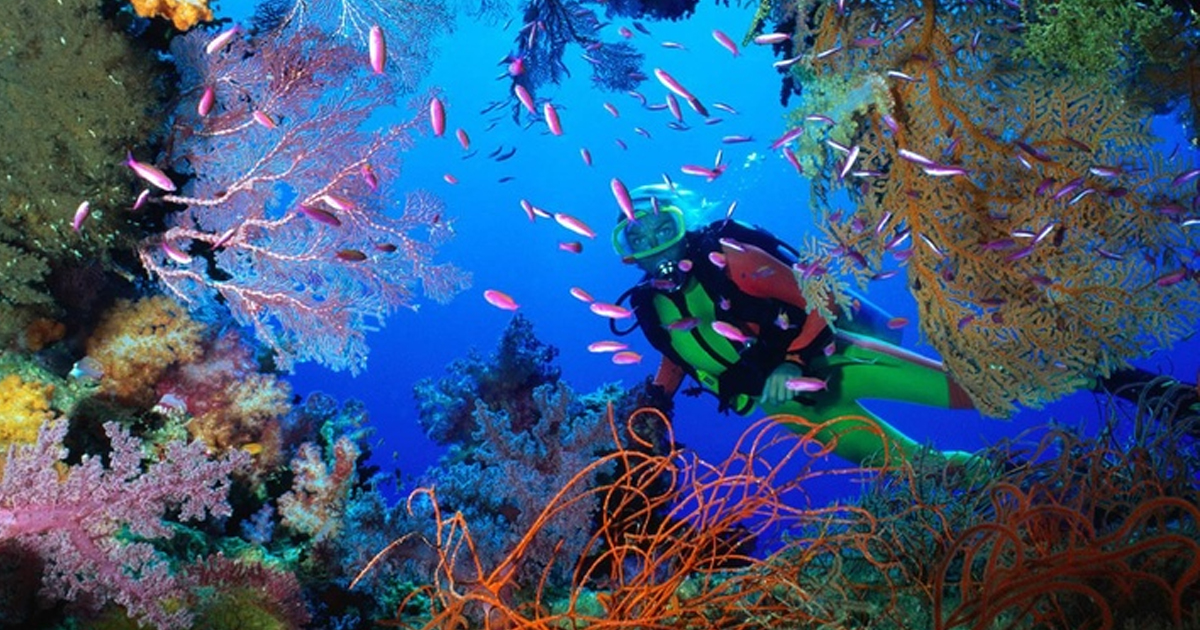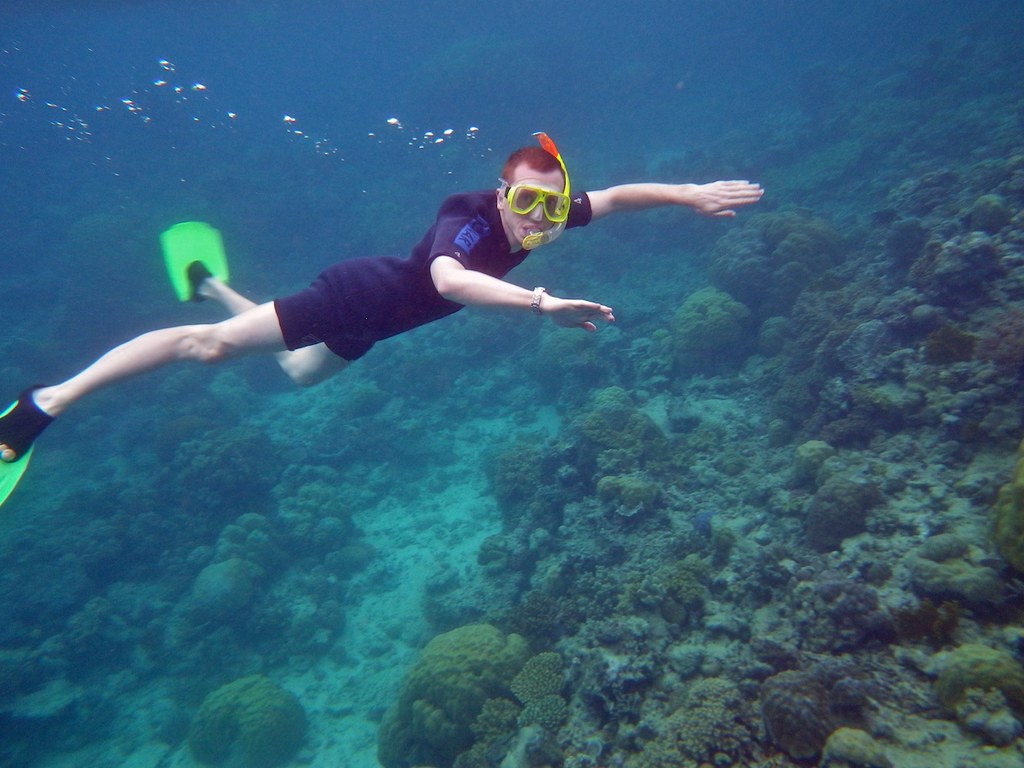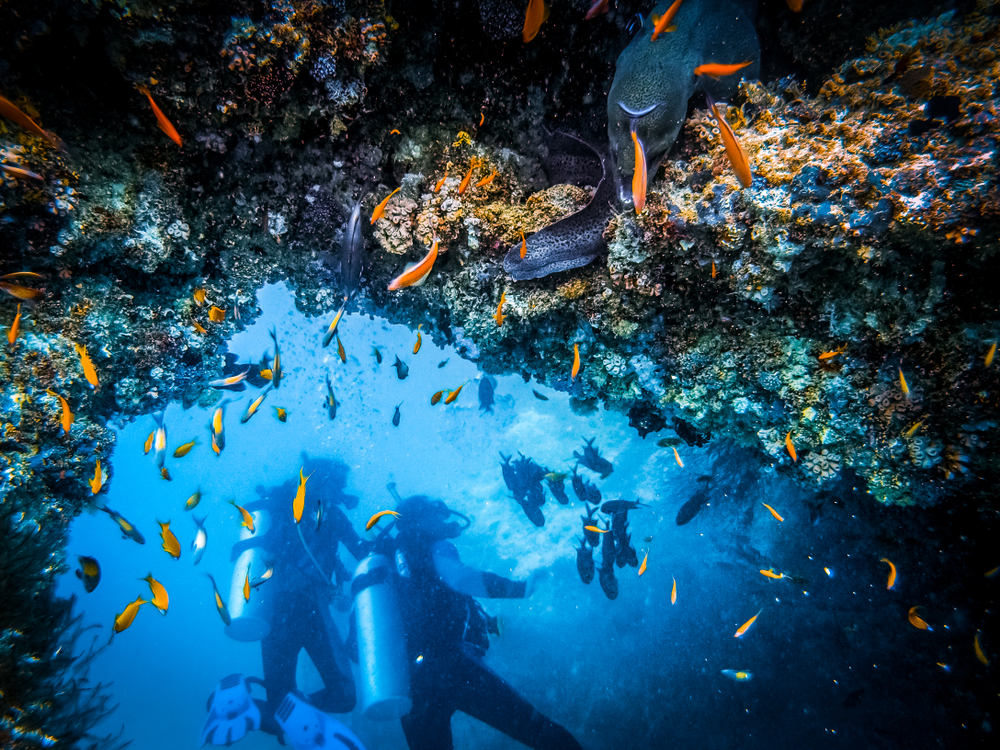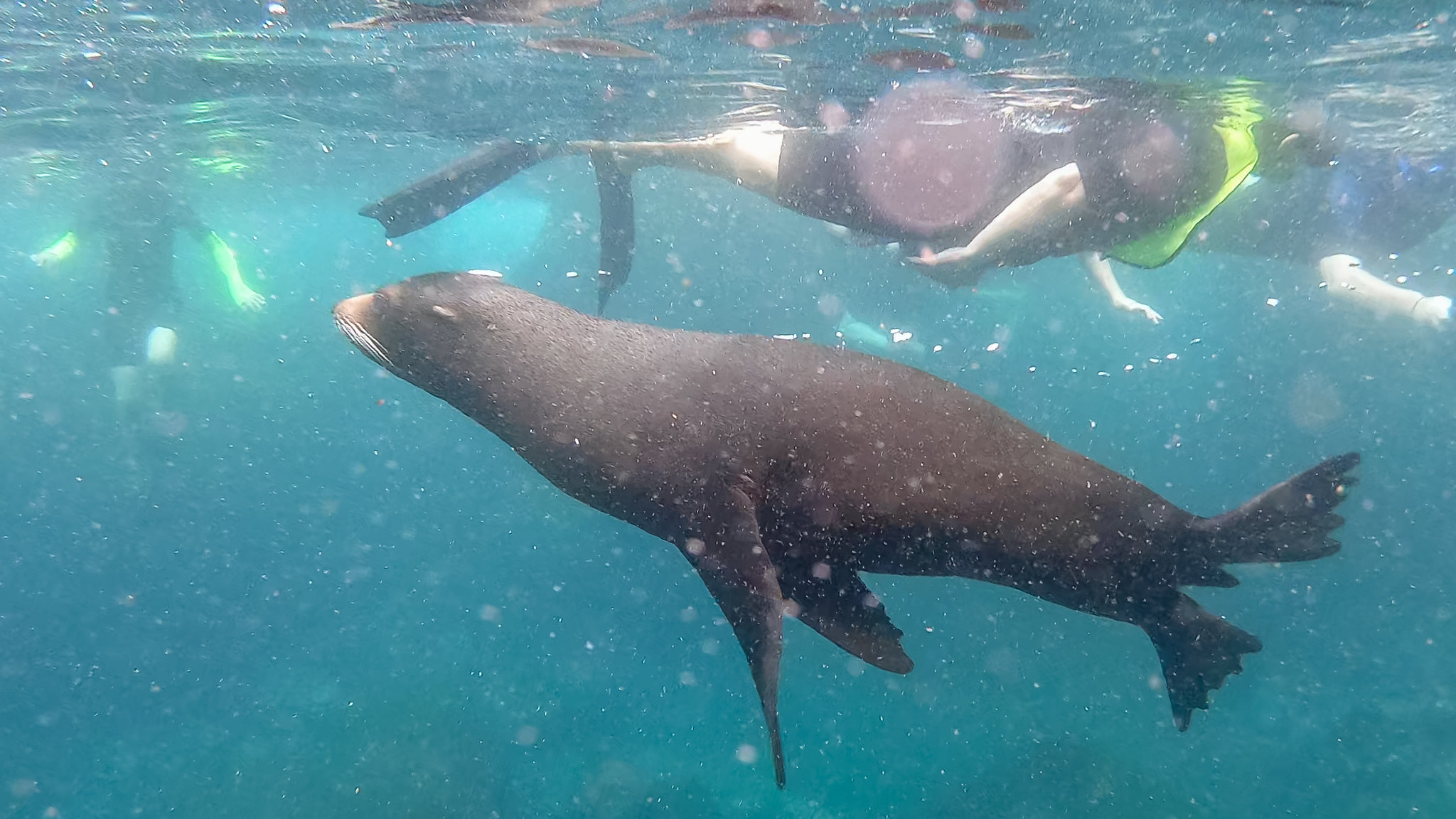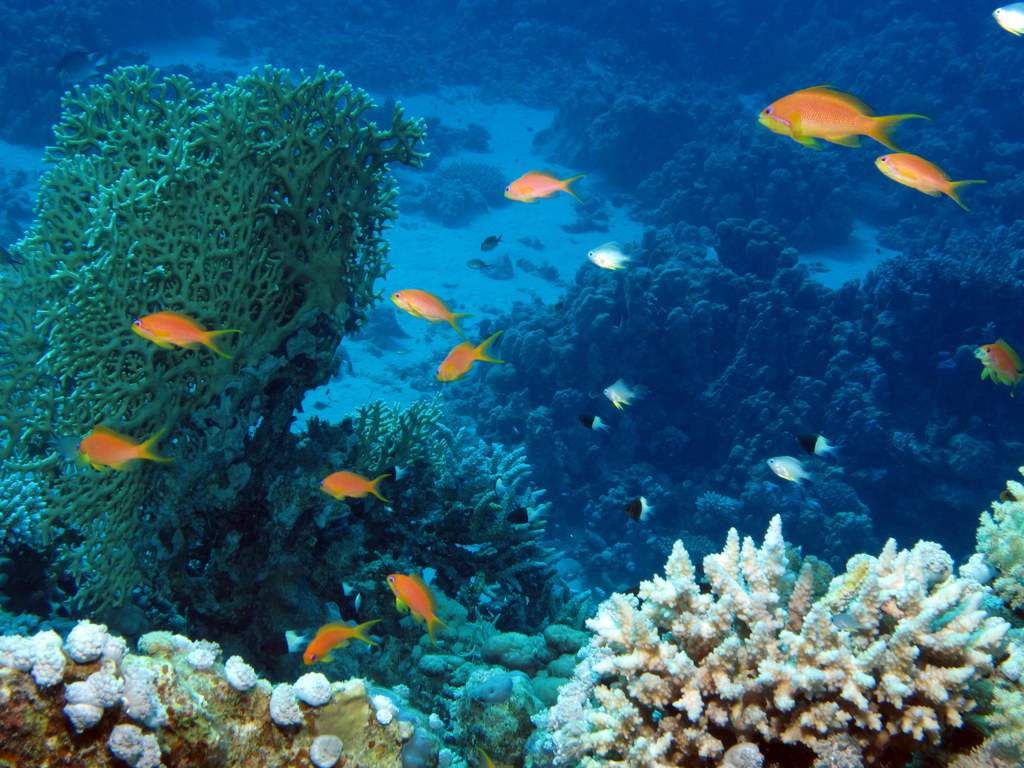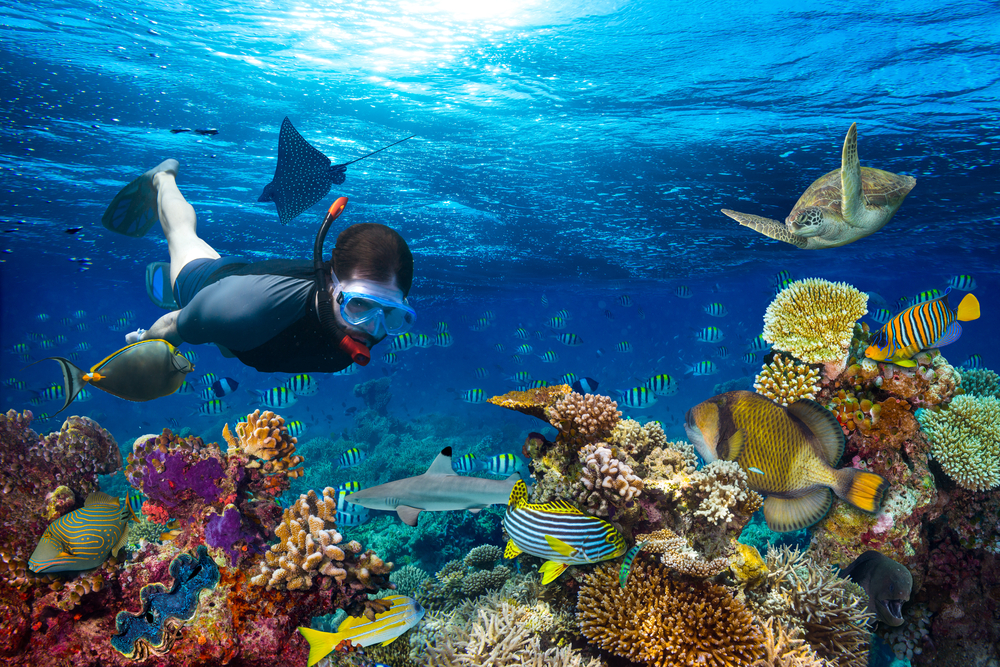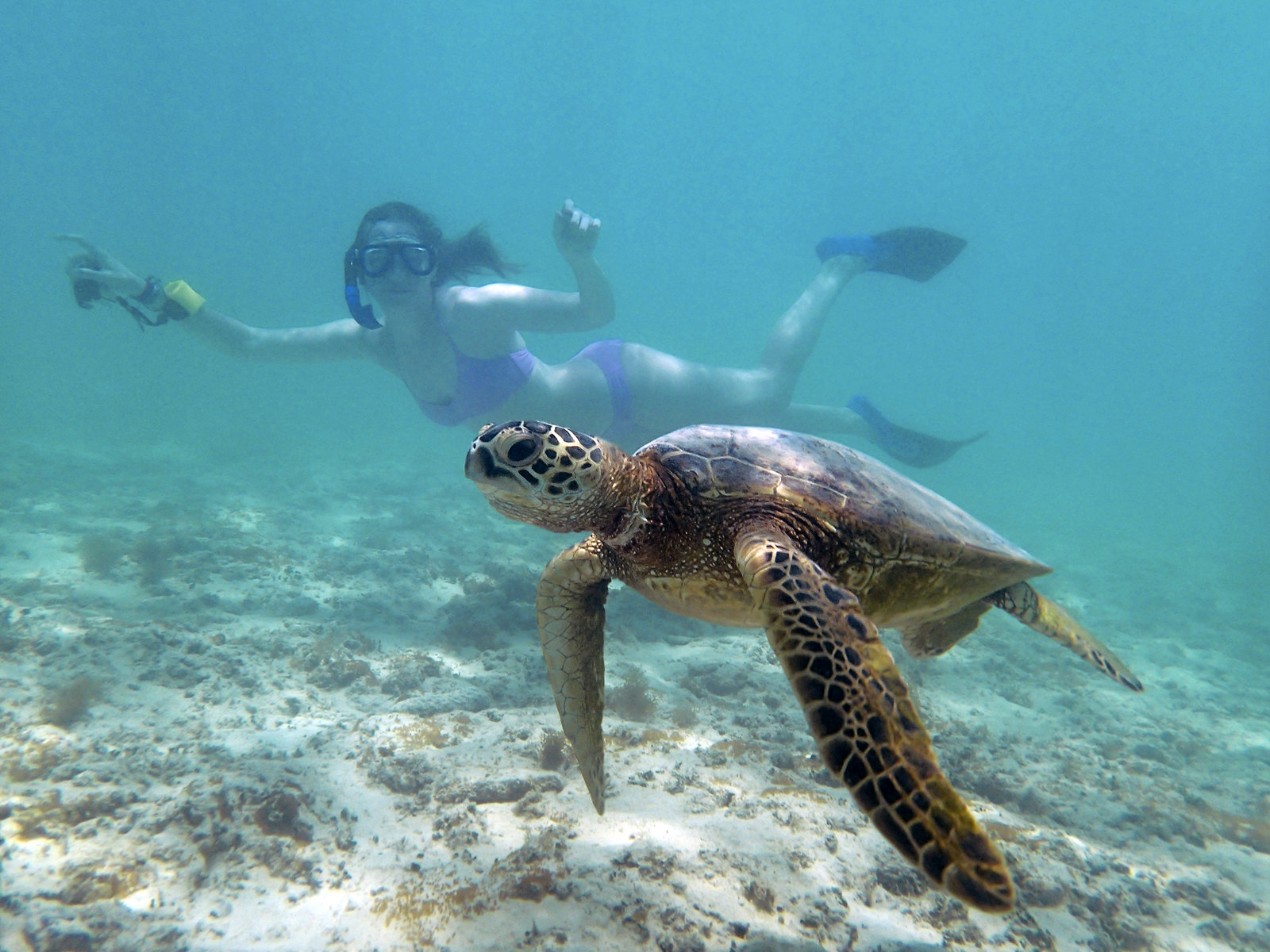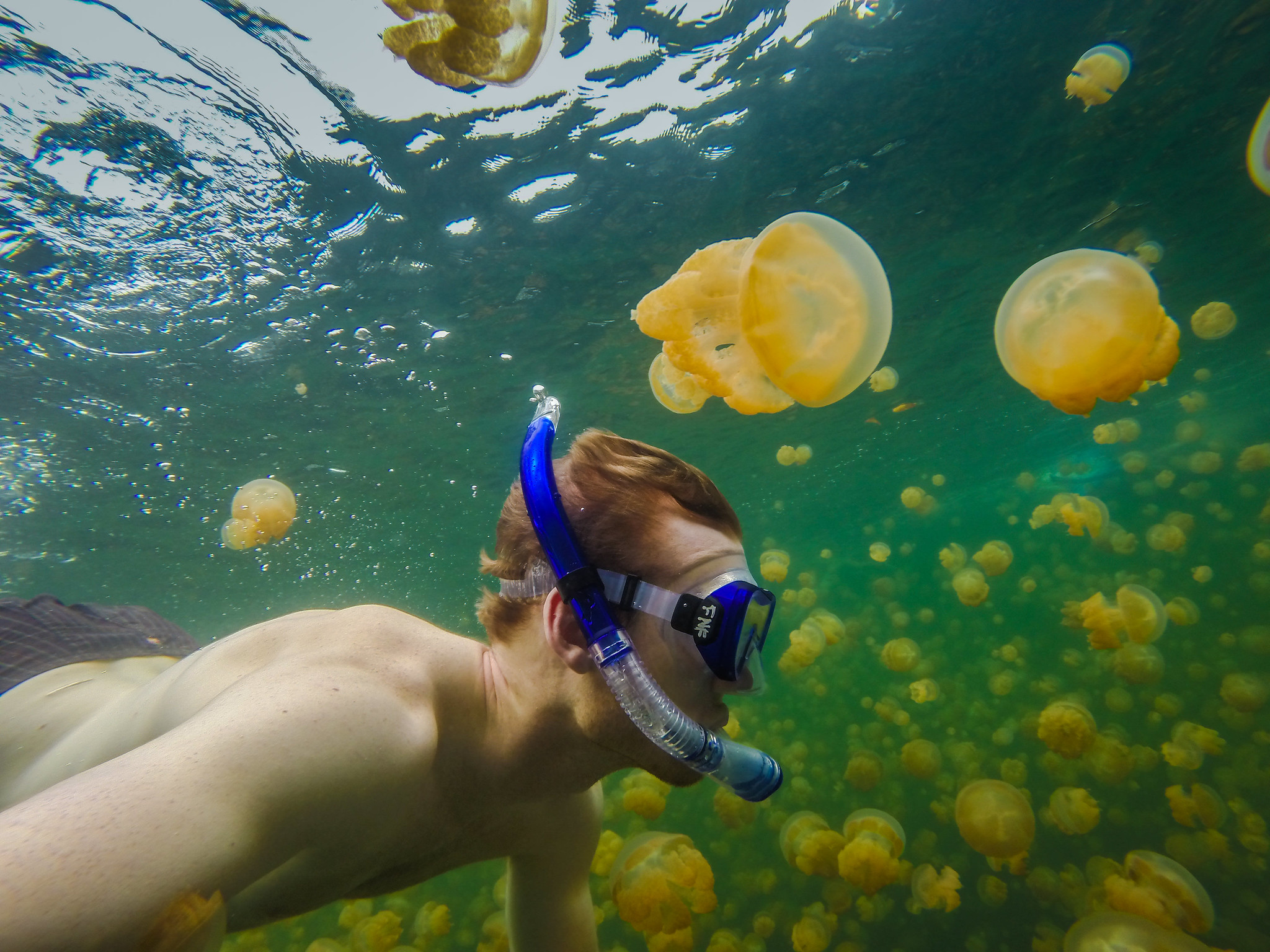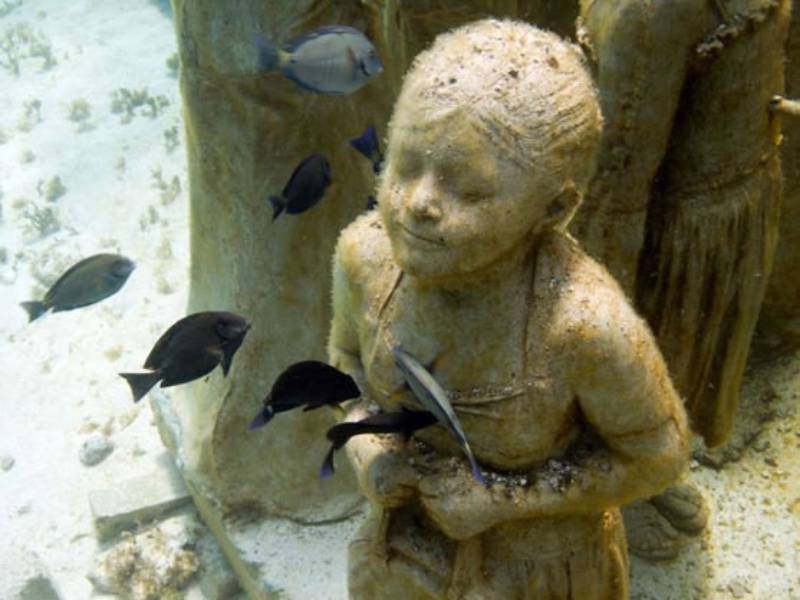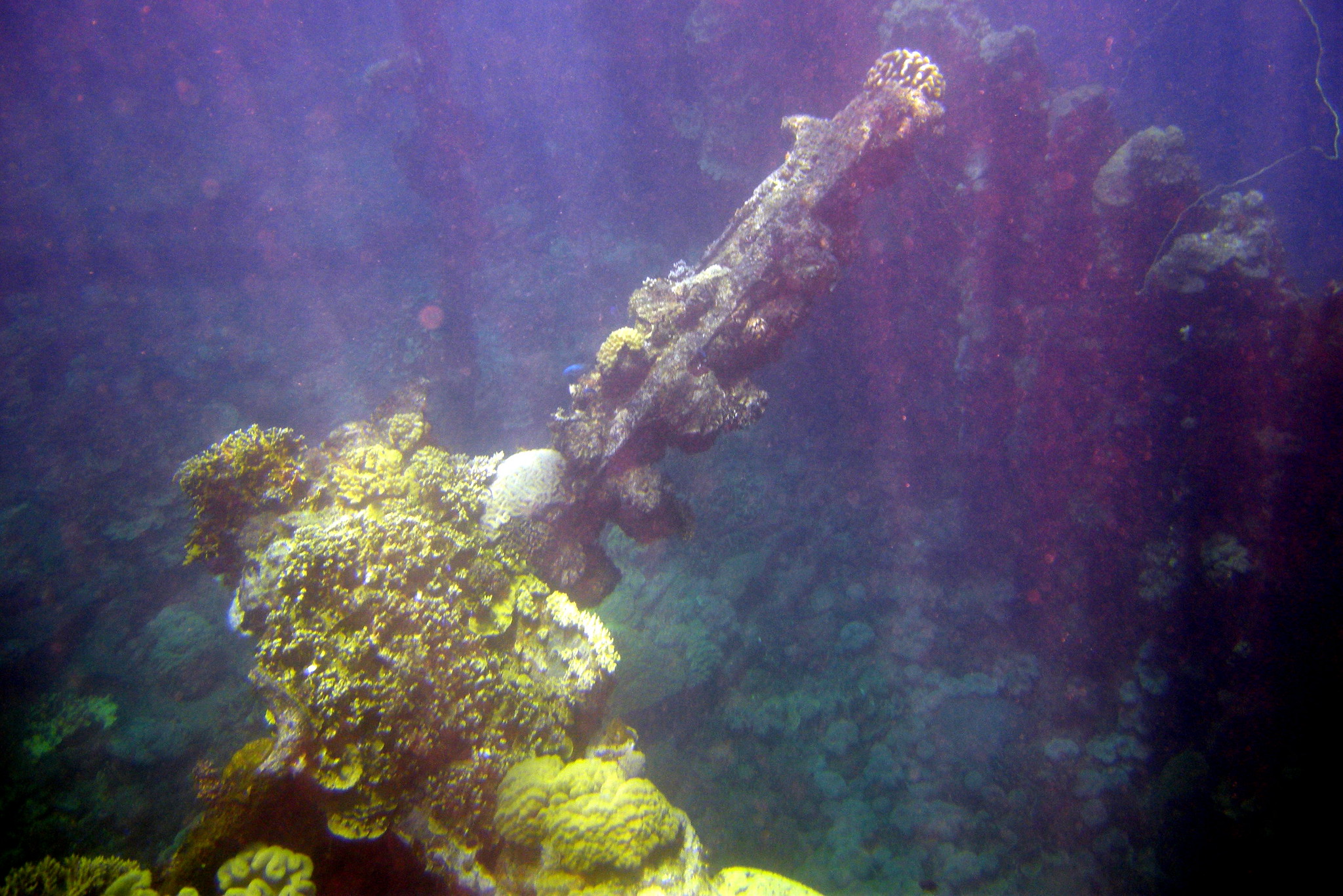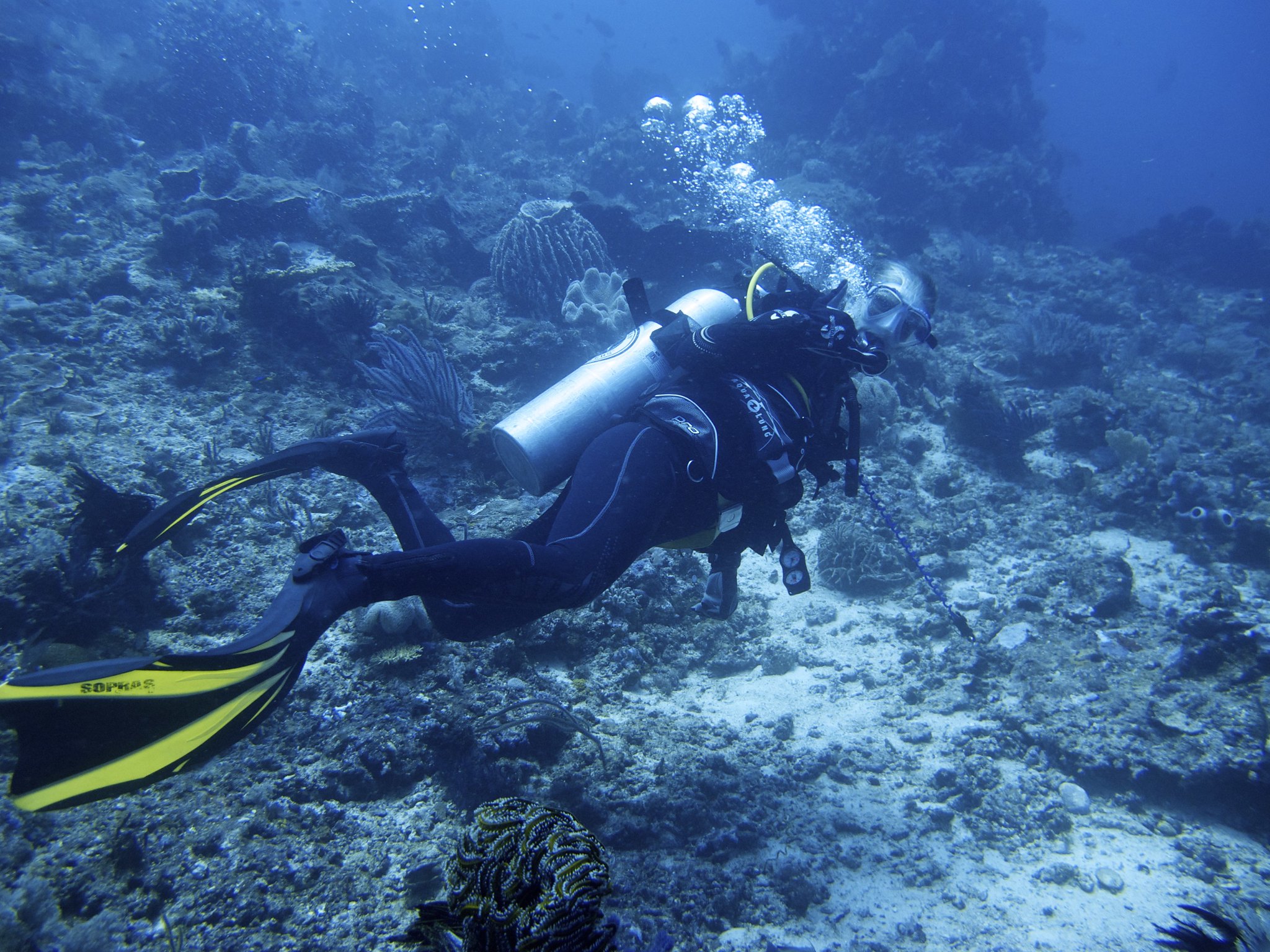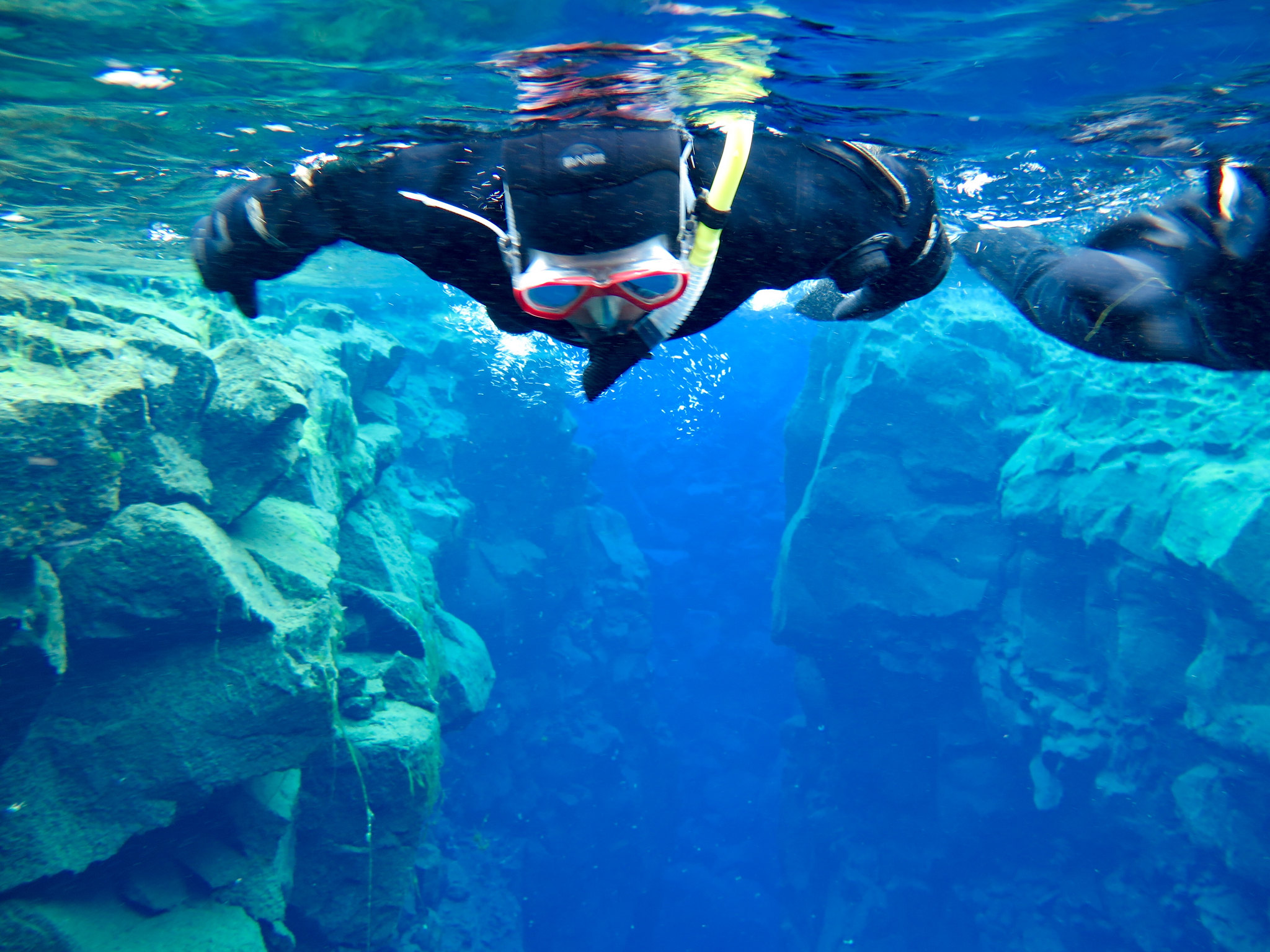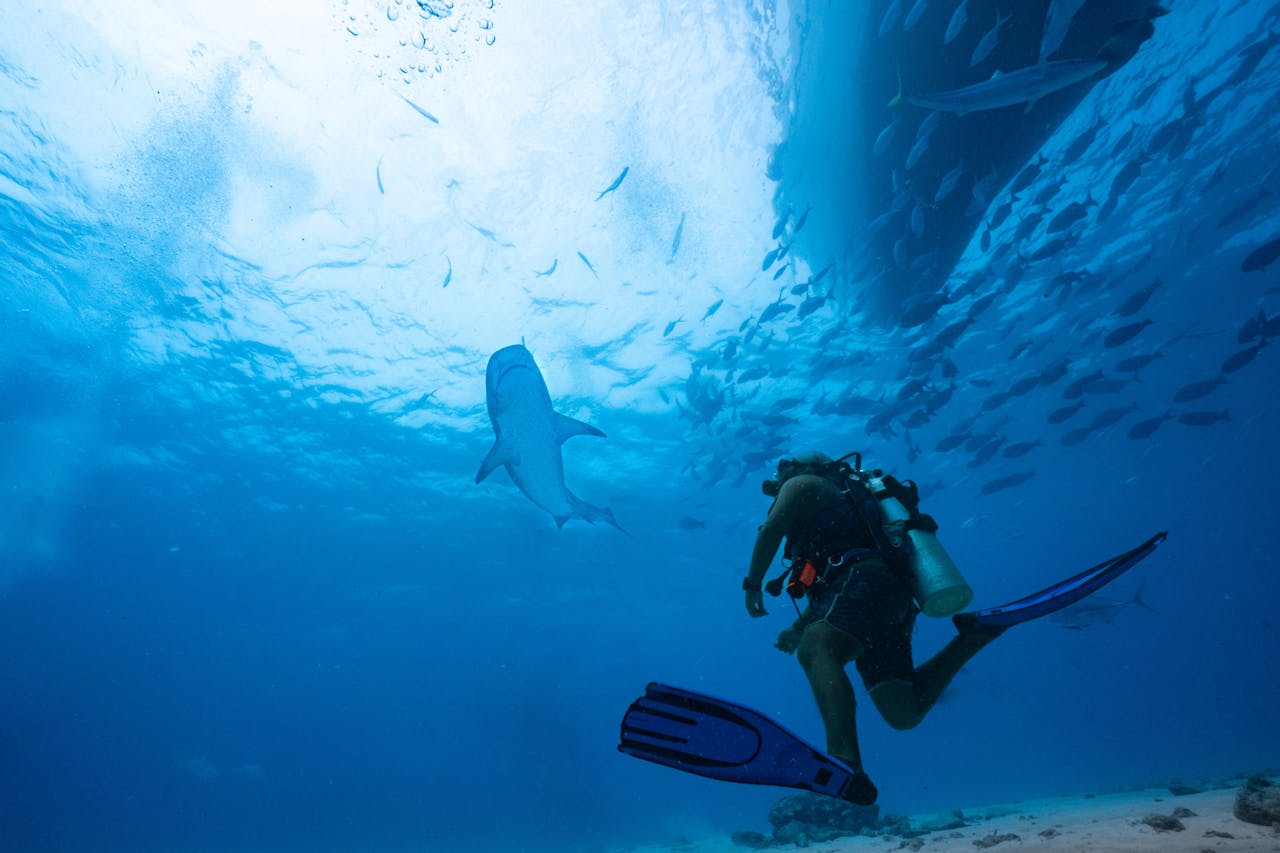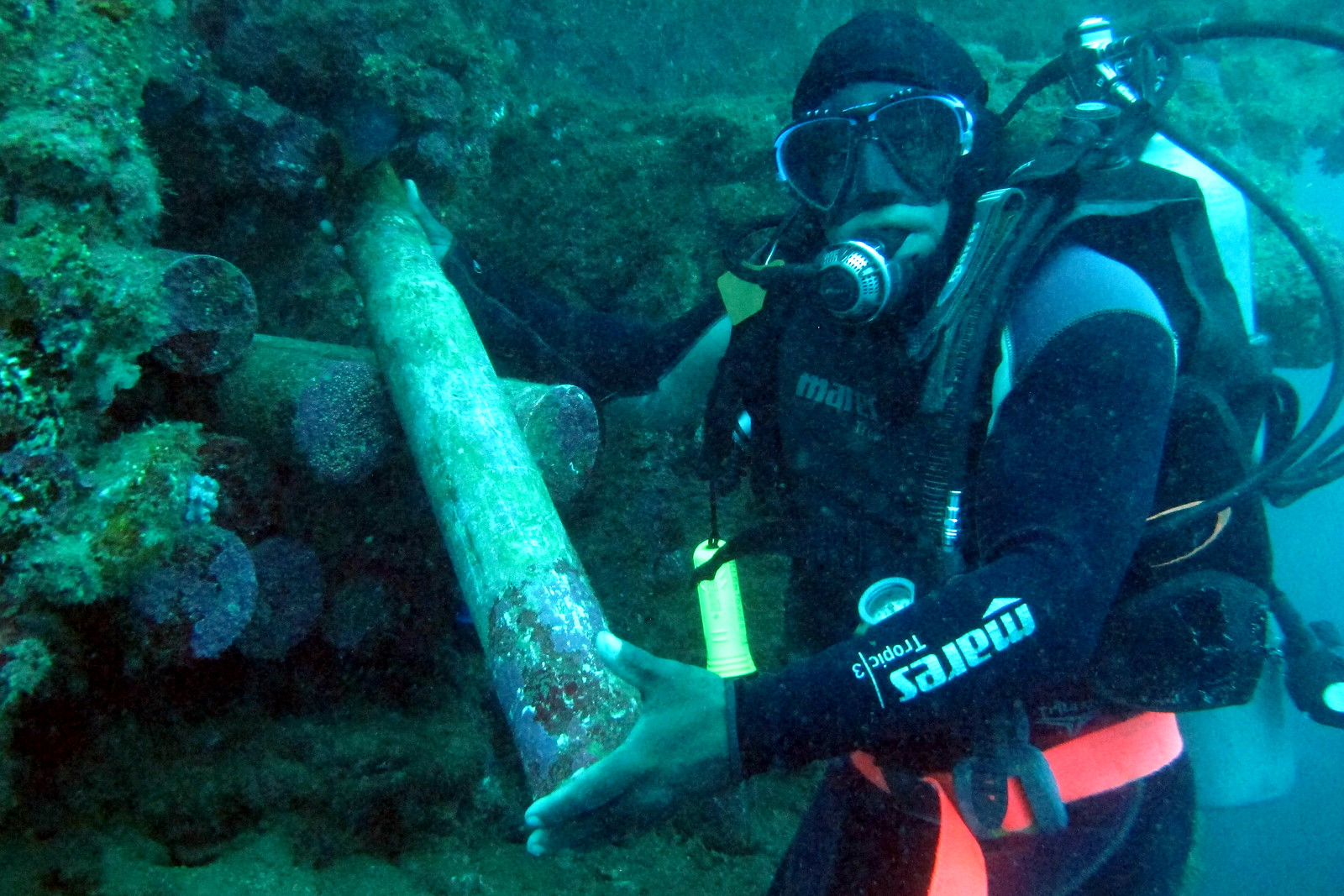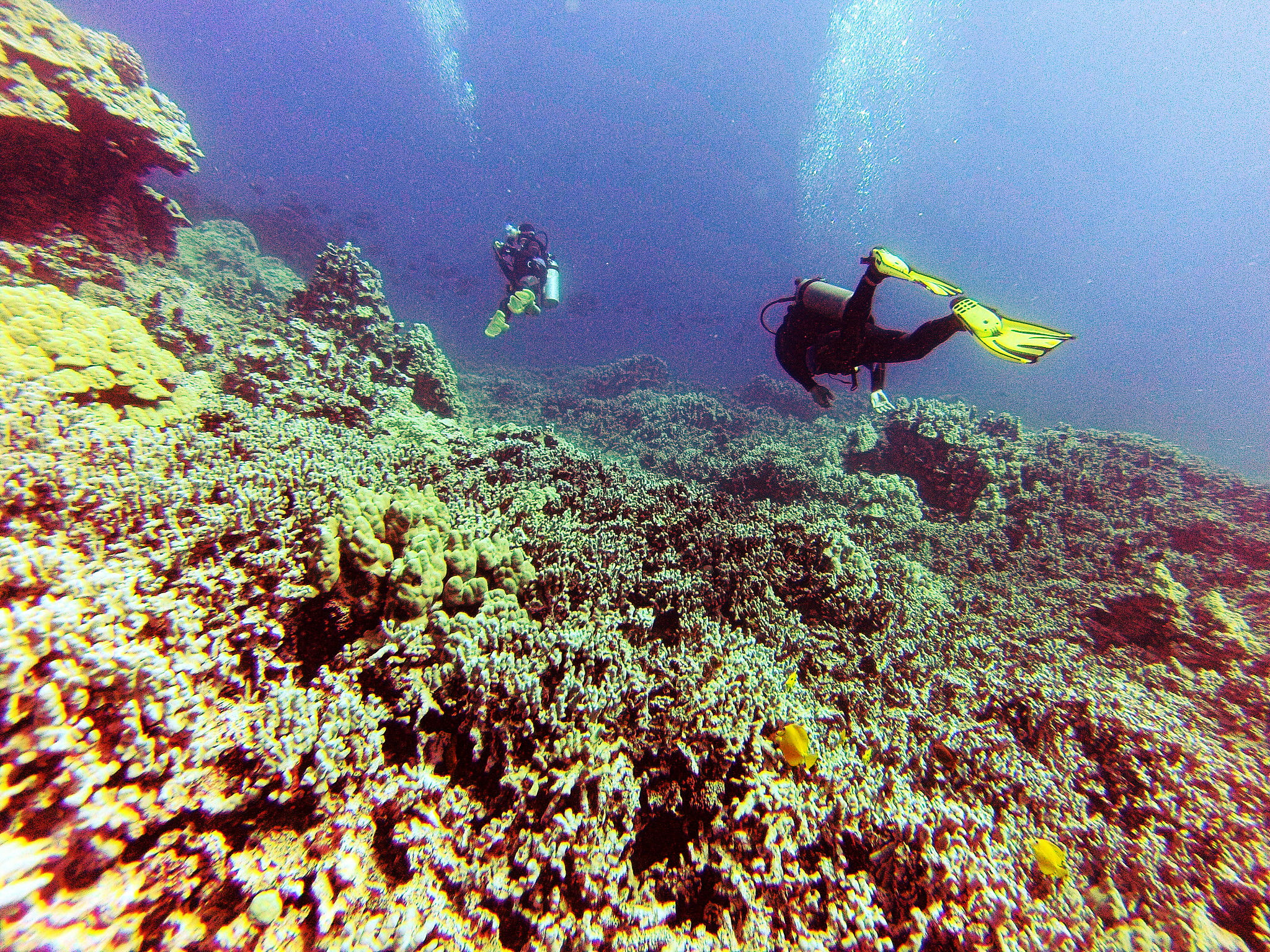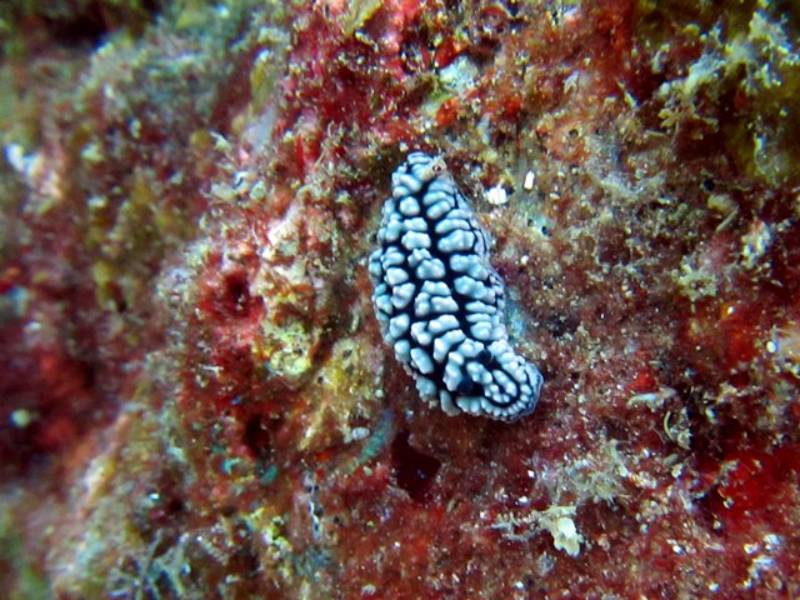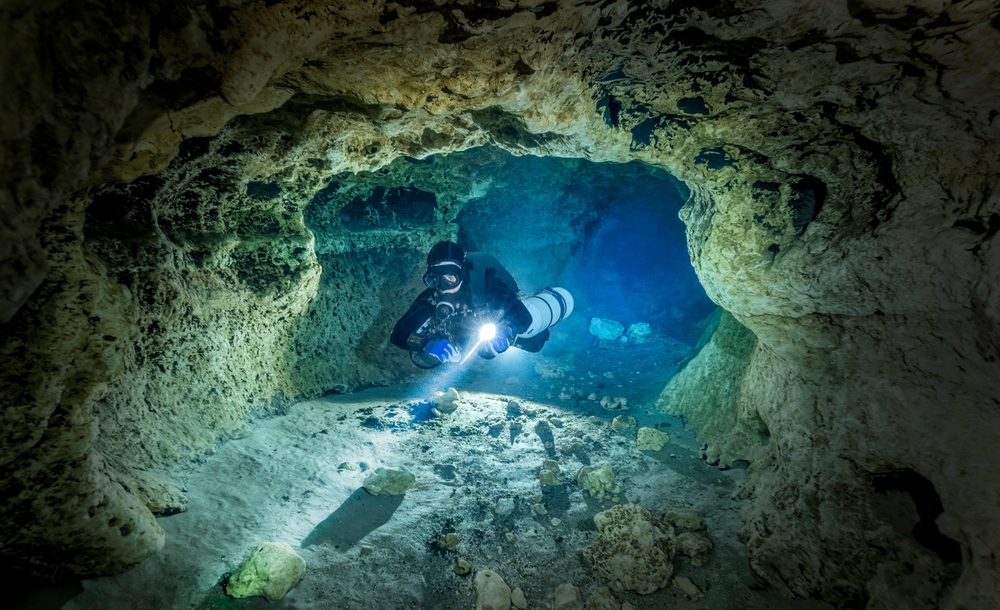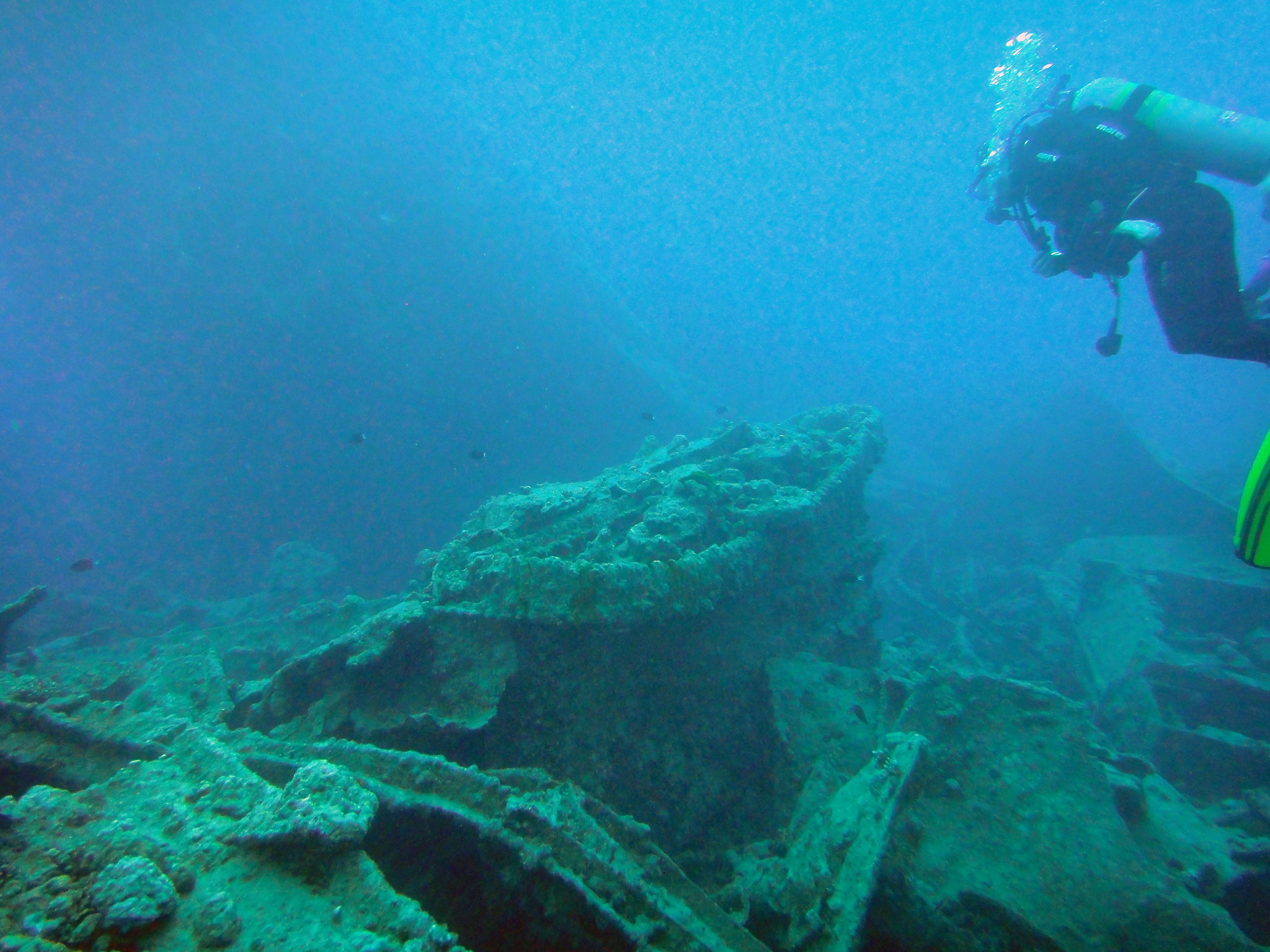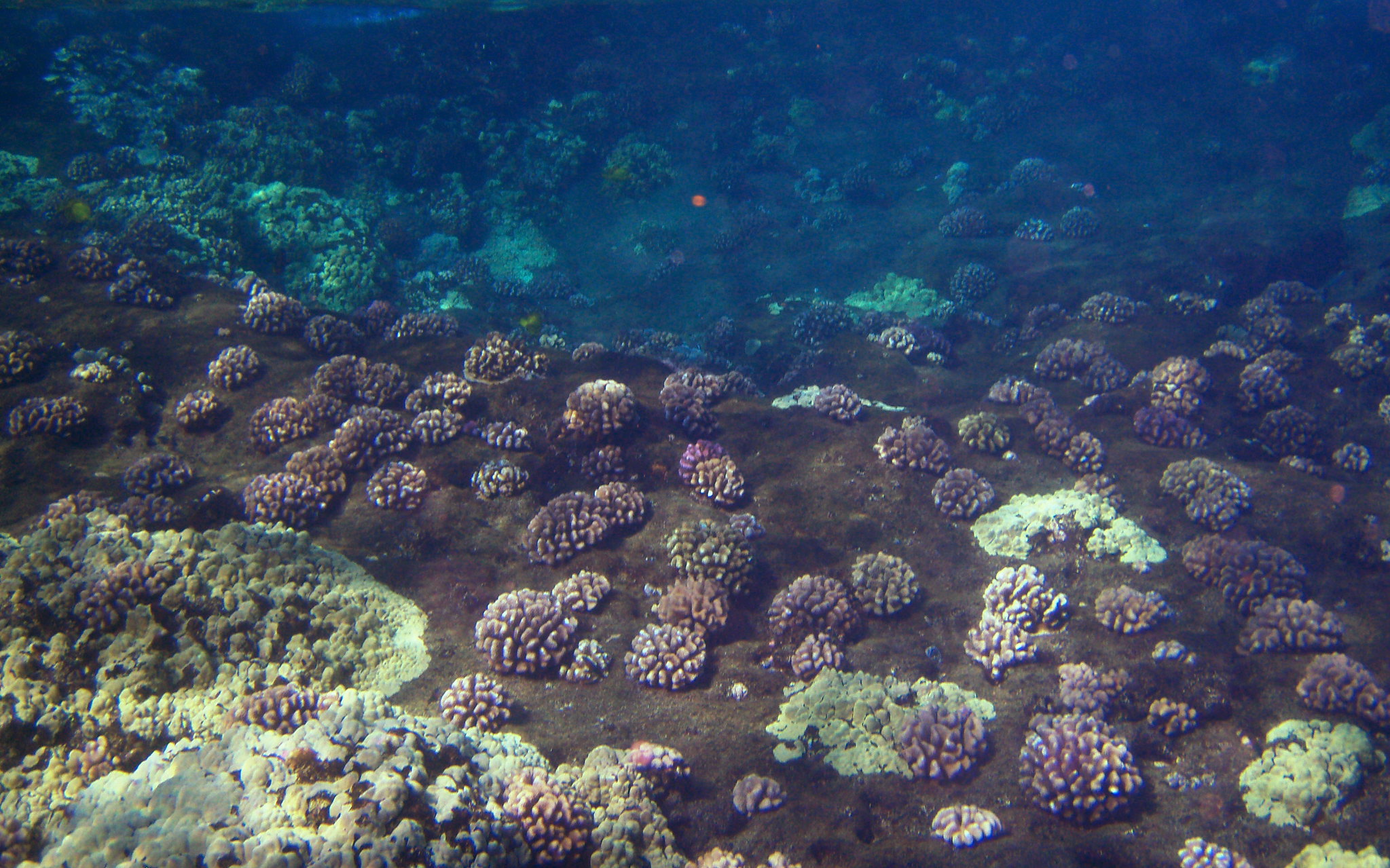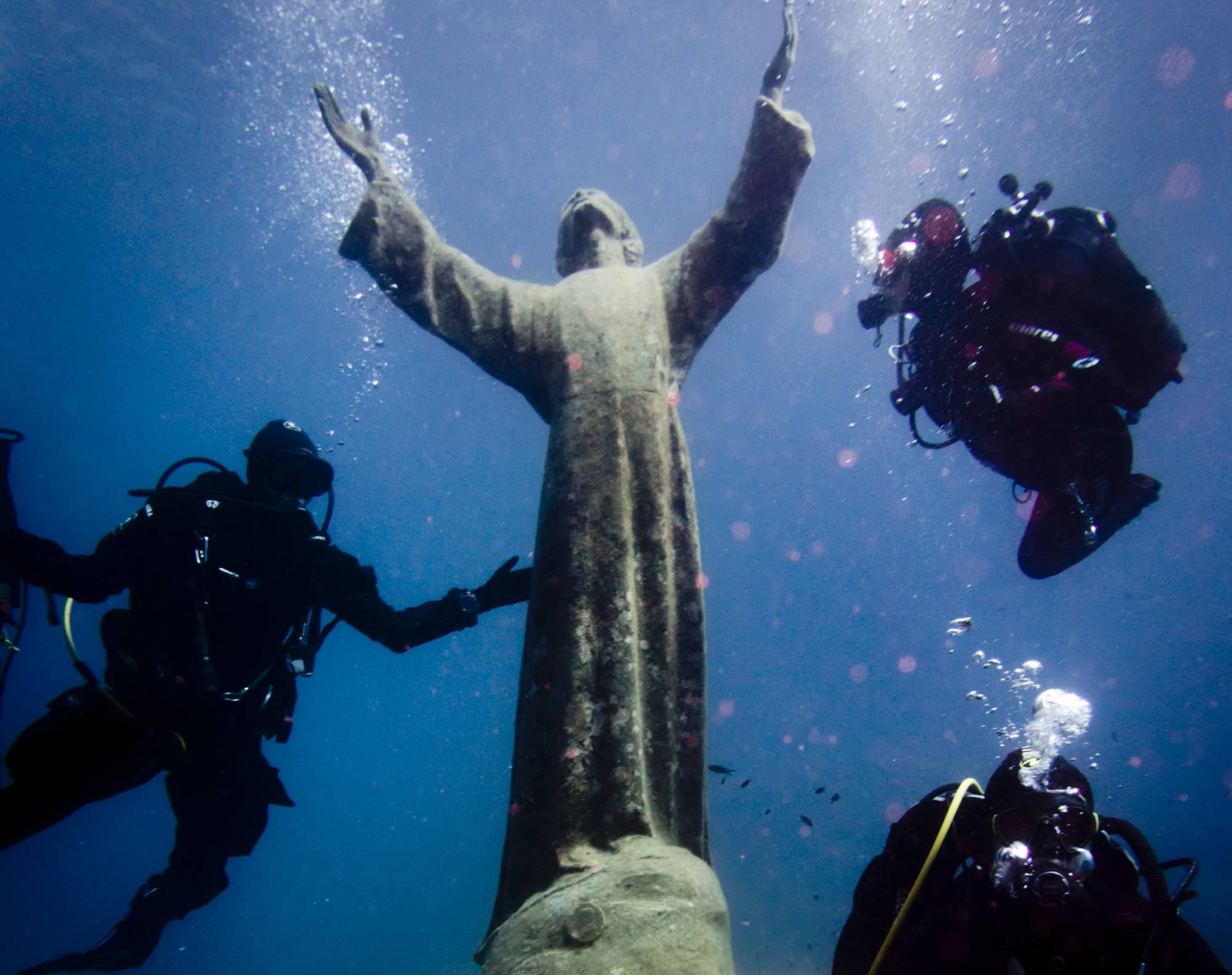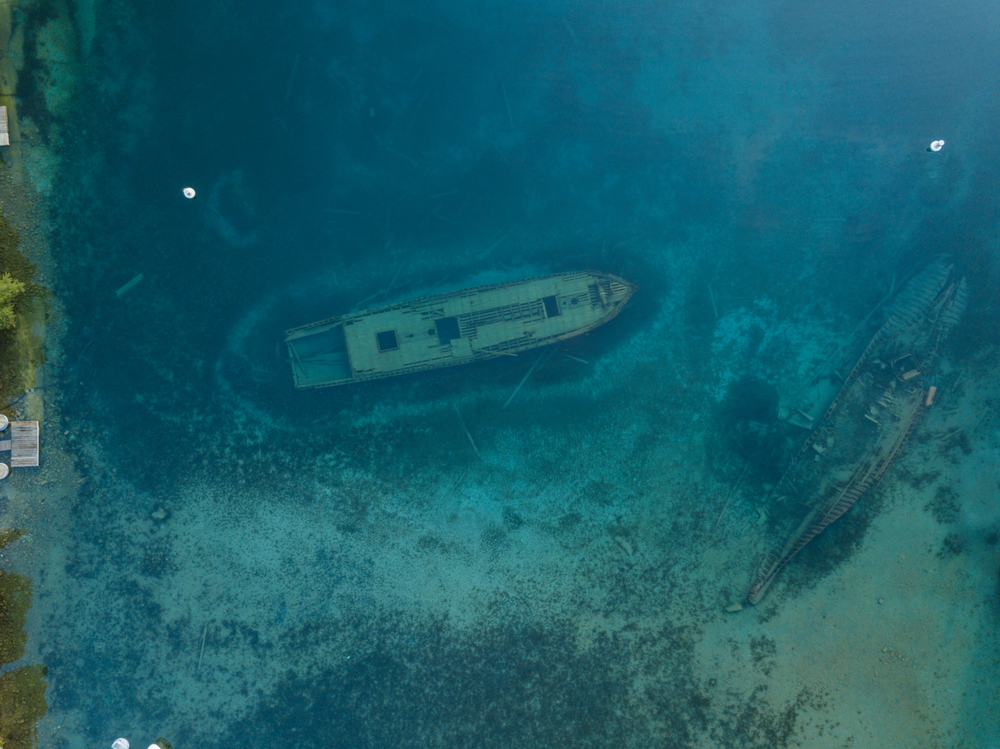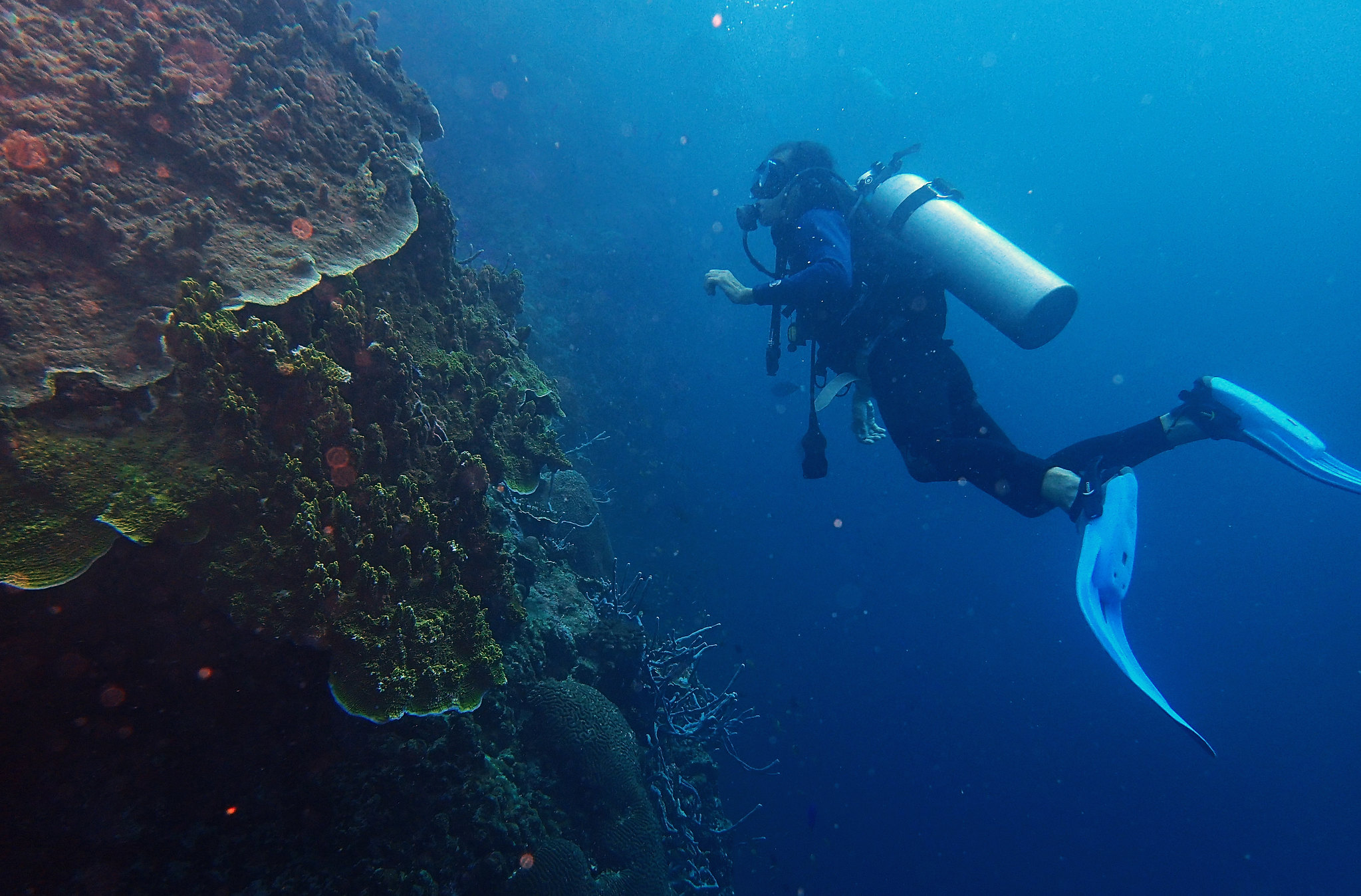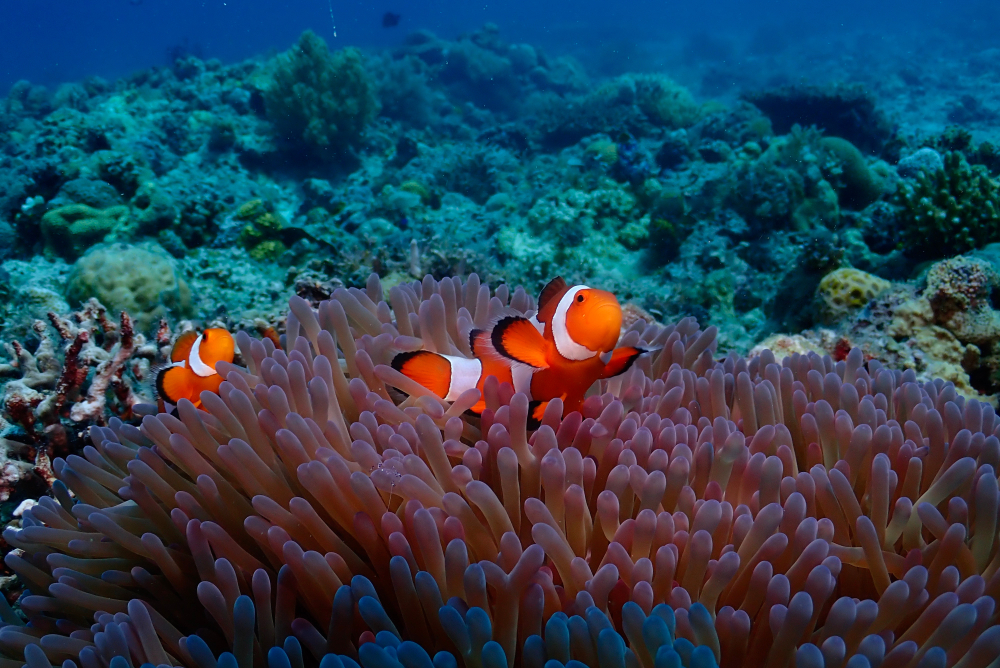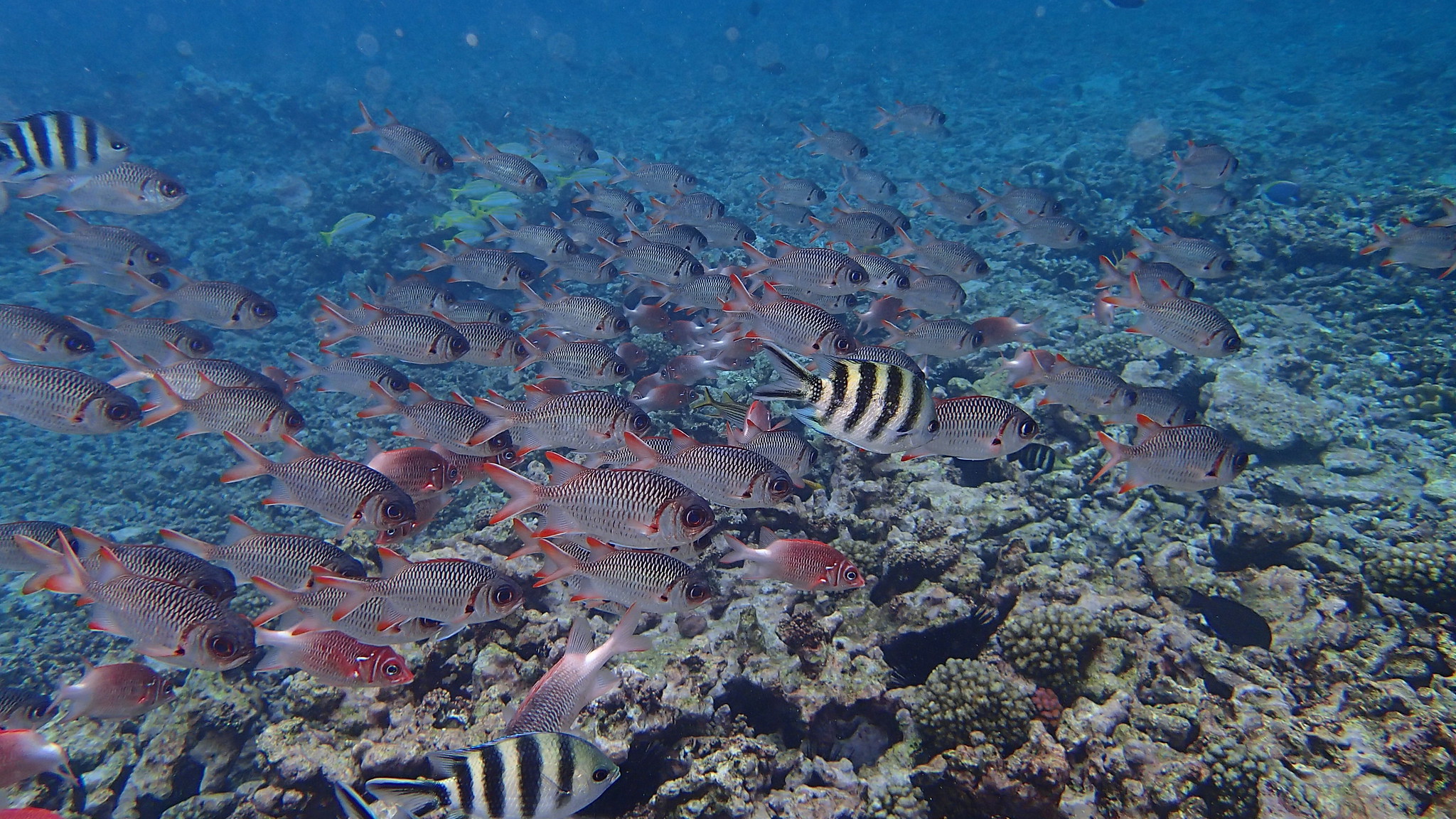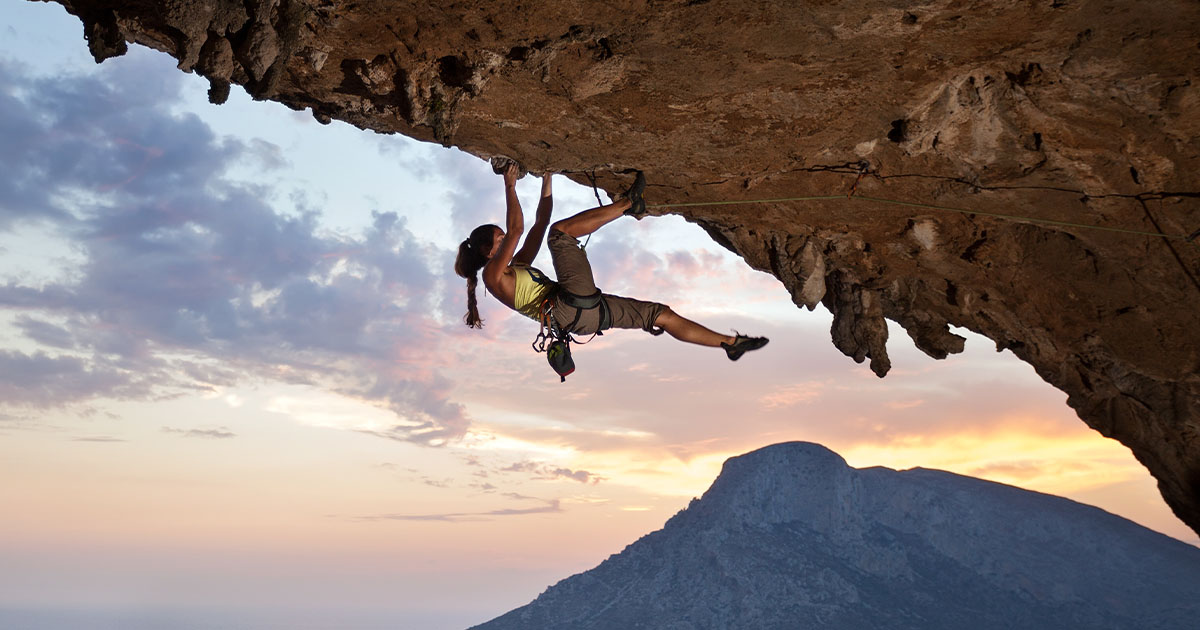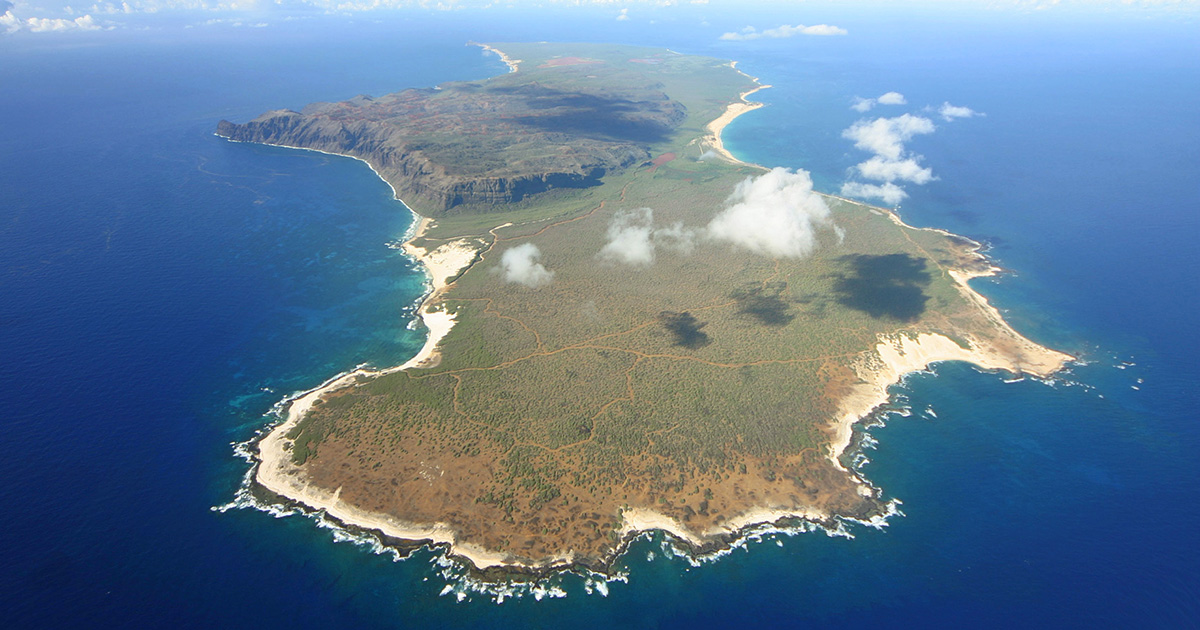Aquatic wonderlands
Those looking for adventure need look no further than the vast oceans and seas that cover almost 75% of our beautiful planet. Keeping in mind how delicate some underwater ecosystems are, those with a bit of courage and the right equipment can witness some of the most incredible sights the Earth has to offer.
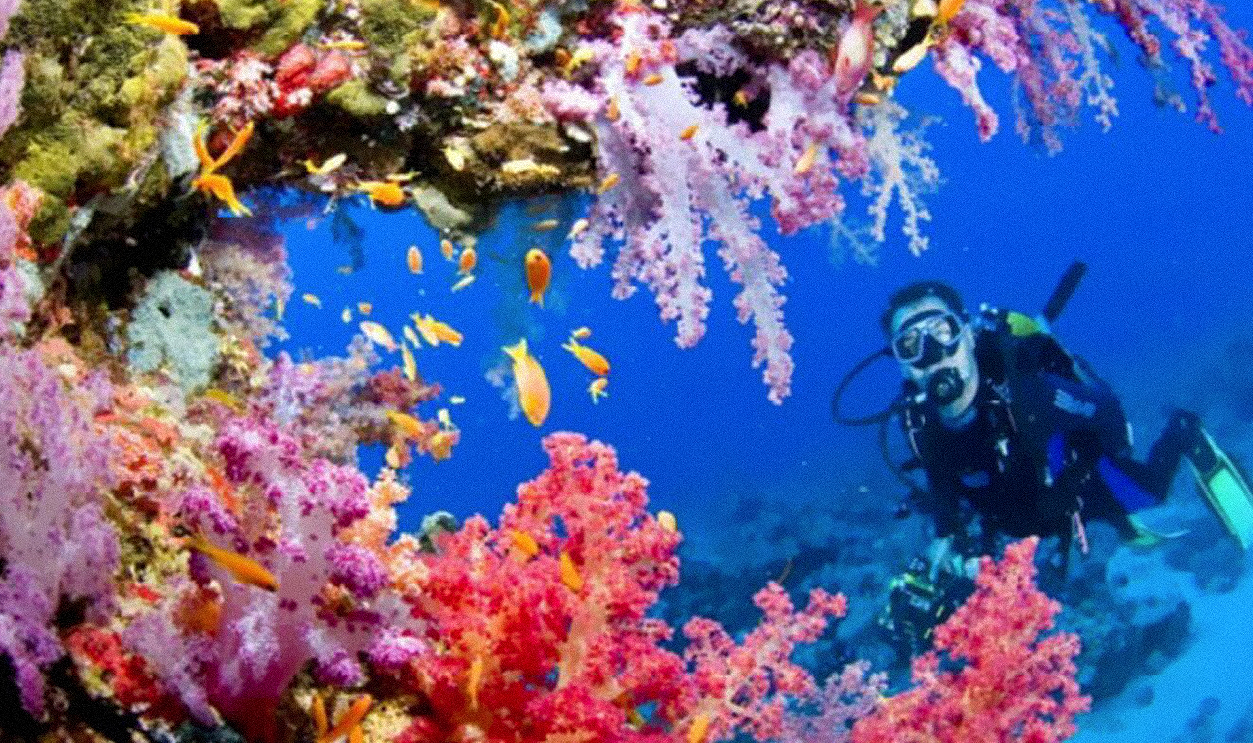
Great Barrier Reef, Australia
The world’s largest coral reef, Australia’s Great Barrier Reef is home to a diverse array of fish and plant life. The United Nations Educational, Scientific and Cultural Organization (UNESCO) has designated it a World Heritage site due to its ecological and scientific importance. The Great Barrier Reef offers divers of any kind a one-of-a-kind experience.
Raja Ampat, Indonesia
The high levels of nutrients in the waters surrounding the 1,500 Raja Ampat islands in Indonesia make for some of the most spectacular diving on the planet. The reefs and animal life in the area are protected by the Raja Ampat Marine Protected Area. Sharks, manta rays, and barracudas are among the sights divers can experience here.
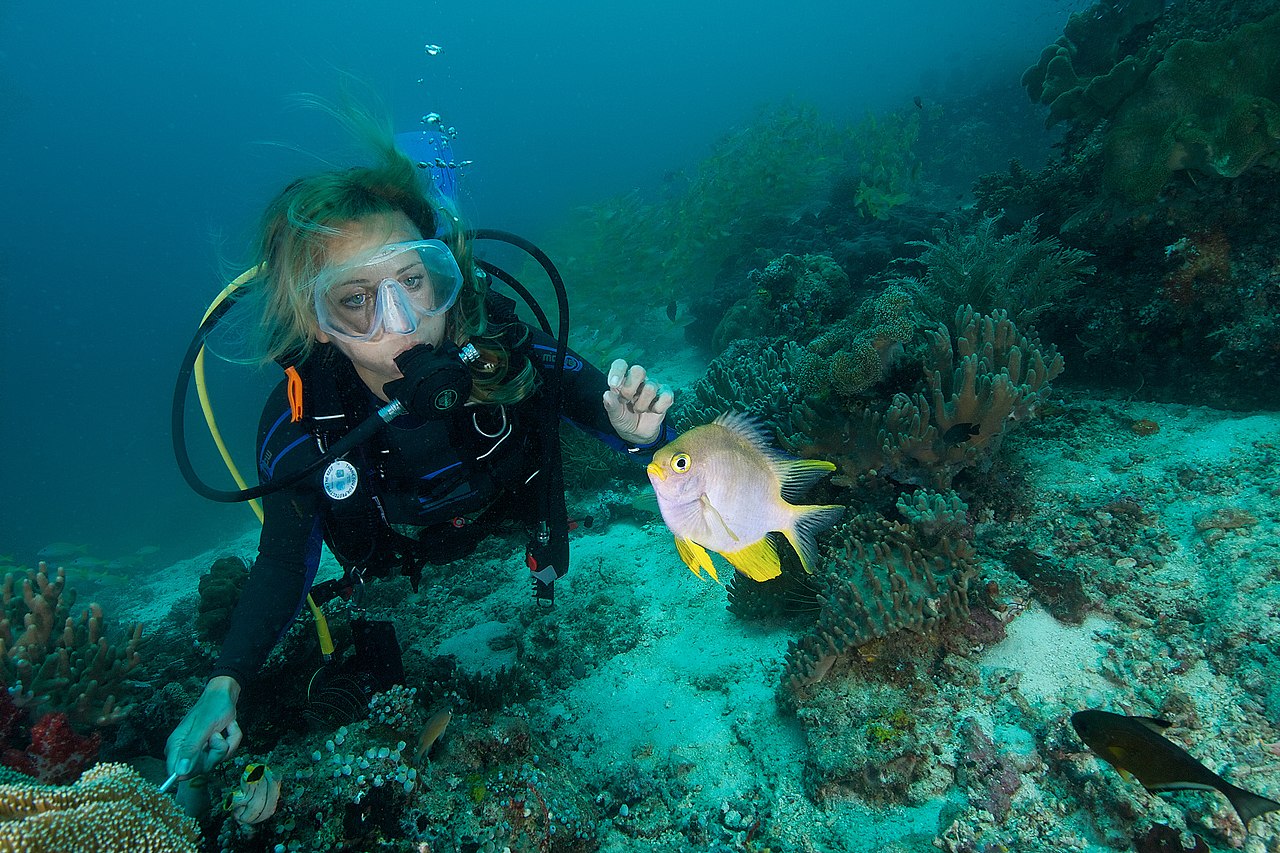 Buena Ventura, CC BY 3.0, Wikimedia Commons
Buena Ventura, CC BY 3.0, Wikimedia Commons
The Great Blue Hole, Belize
Belize’s Great Blue Hole is an ocean sinkhole recognizable for its brilliant blue waters and coral reefs. This formation is a unique diving destination known for its diverse array of sea creatures and plants, and, like the Great Barrier Reef, is a UNESCO World Heritage site.
The Maldives
Located in the Indian Ocean, numerous resorts in The Maldives have coral reefs on their properties that are protected and cared for by staff. Showing great concern for the conservation of these amazing underwater environments, the country has also banned shark fishing, so divers may be lucky enough to see these magnificent ocean animals.
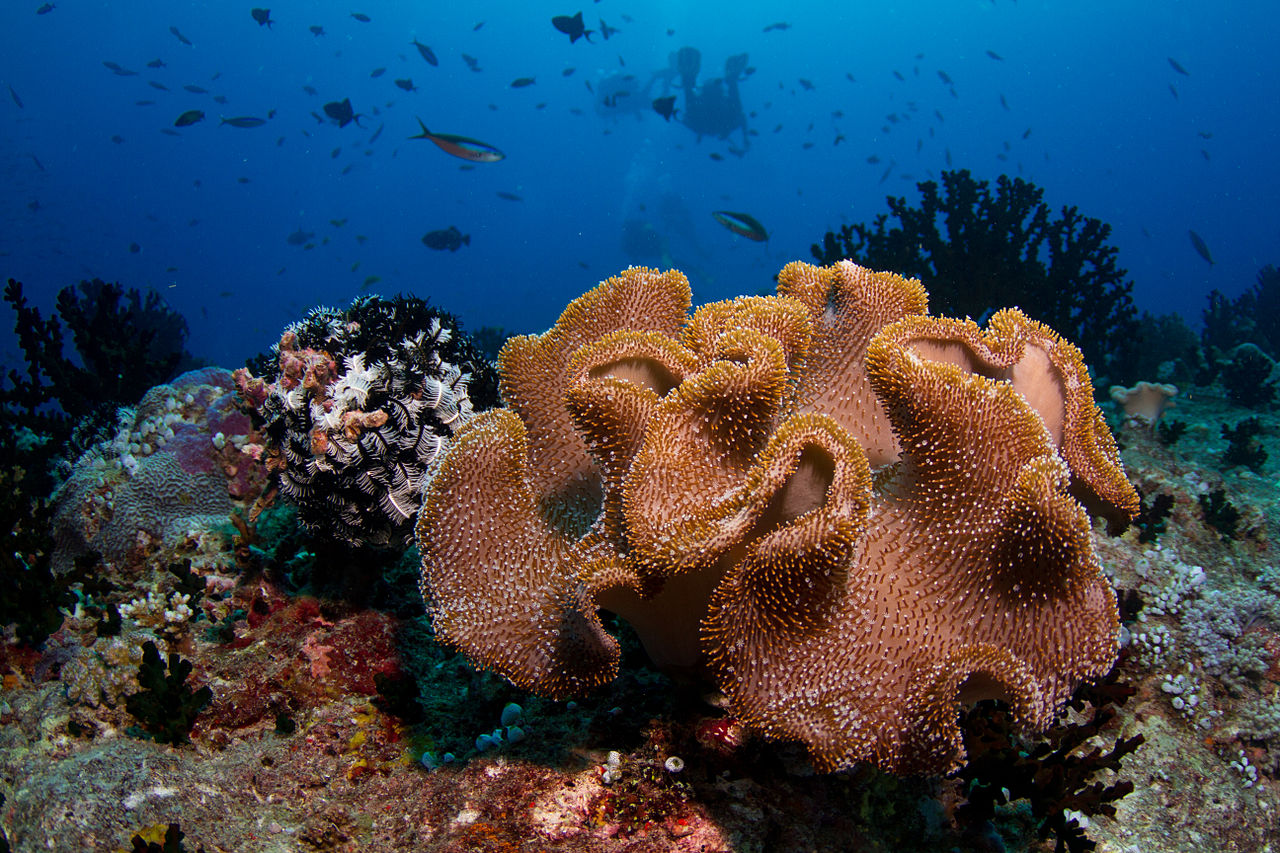 Tchami, CC BY-SA 2.0, Wikimedia Commons
Tchami, CC BY-SA 2.0, Wikimedia Commons
Galápagos Islands, Ecuador
The location that provided much of Darwin’s evidence for evolution, the Galápagos archipelago is a UNESCO-protected opportunity to see sea life unique to this part of the world. From sharks congregating around an underwater volcano to the famous Galápagos Giant Tortoise, this Ecuadorian jewel has much to offer divers and land-lubbers alike.
The Red Sea, Egypt
Egypt is often associated with its deserts and awe-inspiring pyramids, but the country also offers snorkelers and divers an incredible destination. The Red Sea has seven marine protected areas, home to over 1,200 species of fish, sharks, dolphins, rays, and eels. Resorts in the area work with HEPCA, a conservation NGO, to ensure sustainable and safe tourism practices are followed.
Bonneville Seabase, USA
Utah may seem like a strange destination for diving or snorkeling, given its complete lack of coastline! But for those who are somewhat trepidatious about diving in uncontrolled coastal waters, the Bonneville Seabase provides interconnected pools housing fish from all over the world.
Hawaii, USA
Hawaii is home to the largest protected marine area in the world, the Papahānaumokuākea Marine National Monument. This reserve is not open to divers, but the protections in place benefit the surrounding waters, home to over 7,000 plant and animal species. Divers can also explore sunken airplane wrecks off the coast of Oahu.
Jellyfish Lake, Palau
An incredible diving destination in the Oceania country of Palau, Jellyfish Lake is home to millions of non-stinging golden jellyfish. These gentle creatures exist here without any natural predators, and their daily migrations are a wonder for snorkelers and divers to behold.
Sipadan Island, Malaysia
Another protected marine area, Sipadan Island offers divers a more tranquil experience in waters that are less volatile than some of the others we’ve mentioned. Schools of fish and turtles are among the wondrous sights aquatic tourists might encounter.
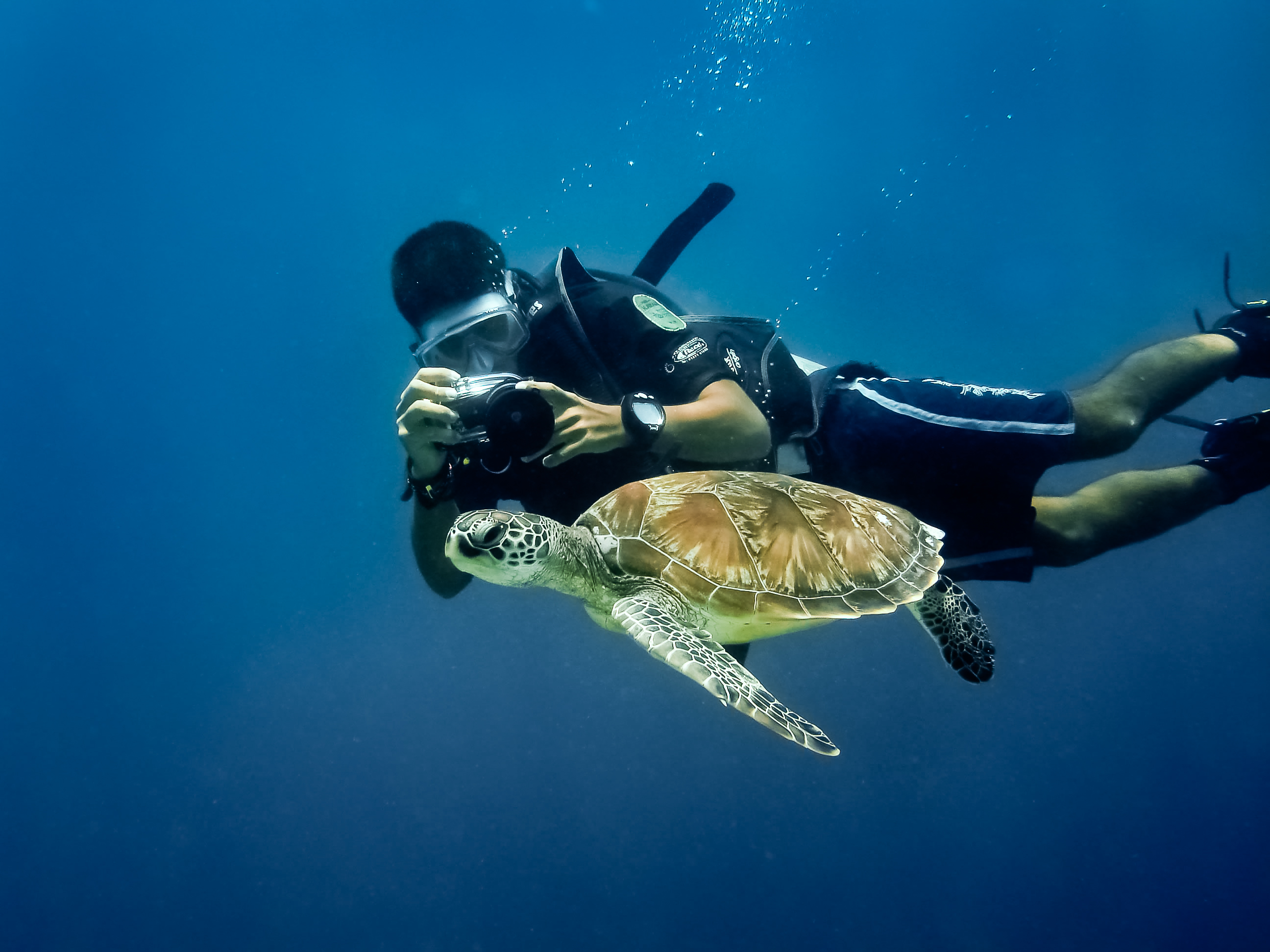 William Warby, CC BY 2.0, Wikimedia Commons
William Warby, CC BY 2.0, Wikimedia Commons
Bonaire, Dutch Caribbean
Although located off the coast of Venezuela, Bonaire is a Dutch island and home to the Bonaire National Marine Park. One of the first protected areas in the Caribbean, divers and snorkelers can climb down into a remarkable coral reef at the 1000 Steps dive site, and witness almost 500 different fish species.
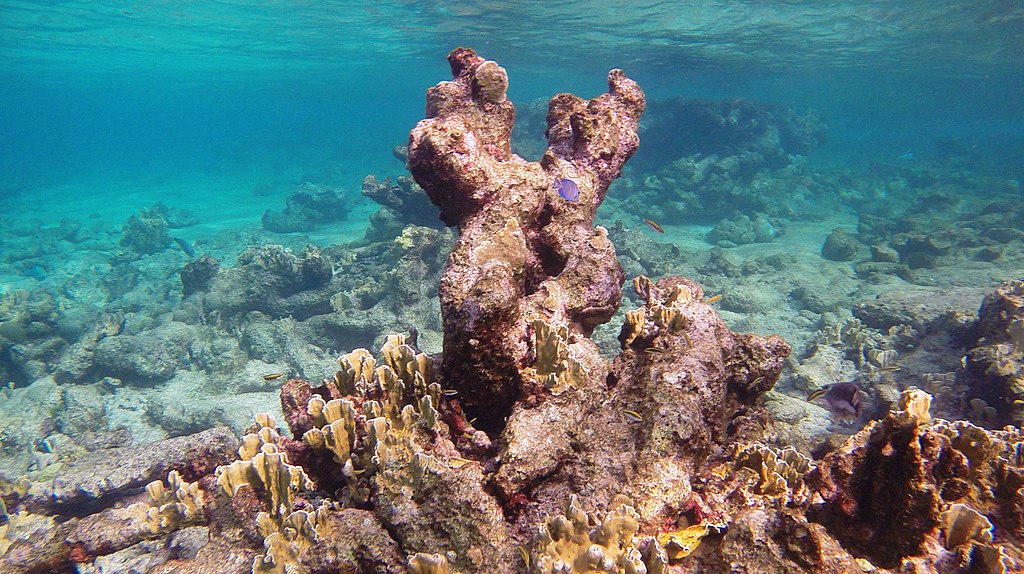 SNORKELINGDIVES.COM, CC BY 2.0, Wikimedia Commons
SNORKELINGDIVES.COM, CC BY 2.0, Wikimedia Commons
Underwater Museum of Art, Mexico
A bit of a different experience than the natural dive sites we’ve discussed so far, the Underwater Museum features a collection of over 500 sculptures that have been placed on the ocean floor for the enjoyment of divers and wildlife alike. The displays are not only artworks but also habitats for marine life and coral reefs, helping to promote the health of the underwater environment.
Truk Lagoon, Micronesia
The Truk Lagoon offers divers a uniquely historical experience. Acting like an underwater museum, aquatic tourists can make their way through shipwrecks, sunken airplanes, and other various treasures and remnants of the turbulent past of this part of the world.
Cocos Island, Costa Rica
A leader in environmental protection, Costa Rica banned sport hunting in 2012 and is instituting artificial reefs in its coastal waters to help ensure the health and future of its undersea environment. Cocos Island boasts a remarkable population of hammerhead sharks. This national park is also a UNESCO World Heritage site.
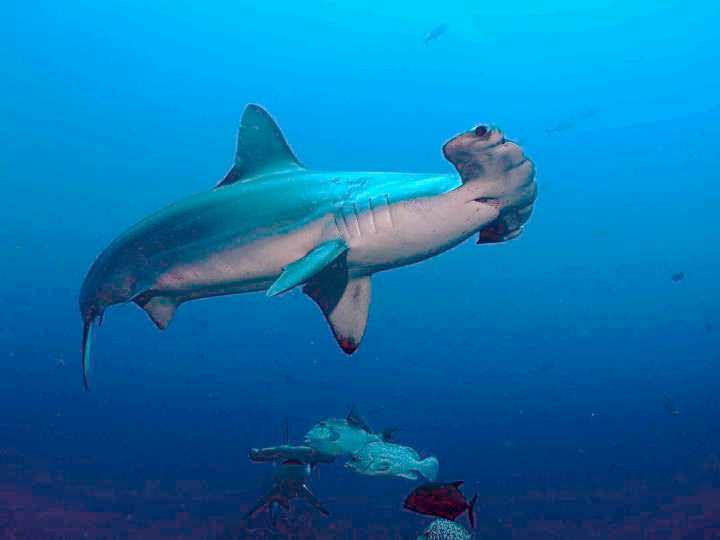 Rodtico21., CC BY-SA 2.0, Wikimedia Commons
Rodtico21., CC BY-SA 2.0, Wikimedia Commons
Cenotes, Mexico
A Cenote is a sinkhole that opens up into the remarkable underwater world that honeycombs much of Mexico’s interior. These freshwater phenomena are considered sacred spots to the Indigenous peoples, though some are open for tourists to explore.
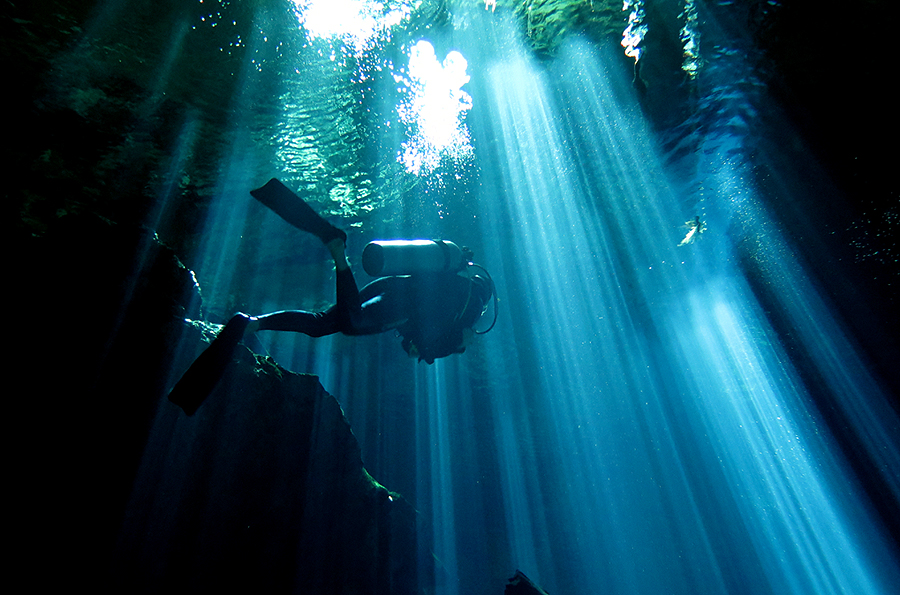 Gustavo Gerdel, CC BY-SA 4.0, Wikimedia Commons
Gustavo Gerdel, CC BY-SA 4.0, Wikimedia Commons
Komodo National Park, Indonesia
While this park’s name brings to mind the famous giant lizards of the area, Komodo National Park is also a great spot for divers and snorkelers. Home to some impressive coral reefs and unspoiled jungle habitats, it’s also known for its wide range of pelagic (open ocean) species on view for the adventurous diver.
Silfra Fissure, Iceland
A chillier destination than most, Iceland’s Silfra Fissure provides aquatic tourists with the chance to see unique volcanic formations. The fissure’s clear waters highlight the spectacular meeting of two of the major tectonic plates of the northern hemisphere.
Lion City, China
If you’ve ever wanted to dive or snorkel through the lost city of Atlantis, China’s Lion City is the destination for you. Preserved for divers since the 1950s, Lion City offers temples, archways, and statues in the ethereal waters of Qiandao Lake.
 Nihaopaul, CC BY-SA 3.0 , Wikimedia Commons
Nihaopaul, CC BY-SA 3.0 , Wikimedia Commons
Eilat’s Coral Beach Nature Reserve, Israel
Divers and snorkelers can experience an incredible array of plant and animal life in this reserve, situated in the Red Sea. One unique offering of the Eilat’s reserve is an underwater observation area. Those who are not so comfortable floating through the water can also witness the beauty and strangeness of the underwater world.
Yonaguni Monument, Japan
There is some debate over whether this is a natural formation or a human-made one. Regardless, the Yonaguni Monument is an incredible and rewarding dive site off the coast of Japan. Perhaps an ancient city or sacred site, the monument is home to a diverse array of colorful fish species.
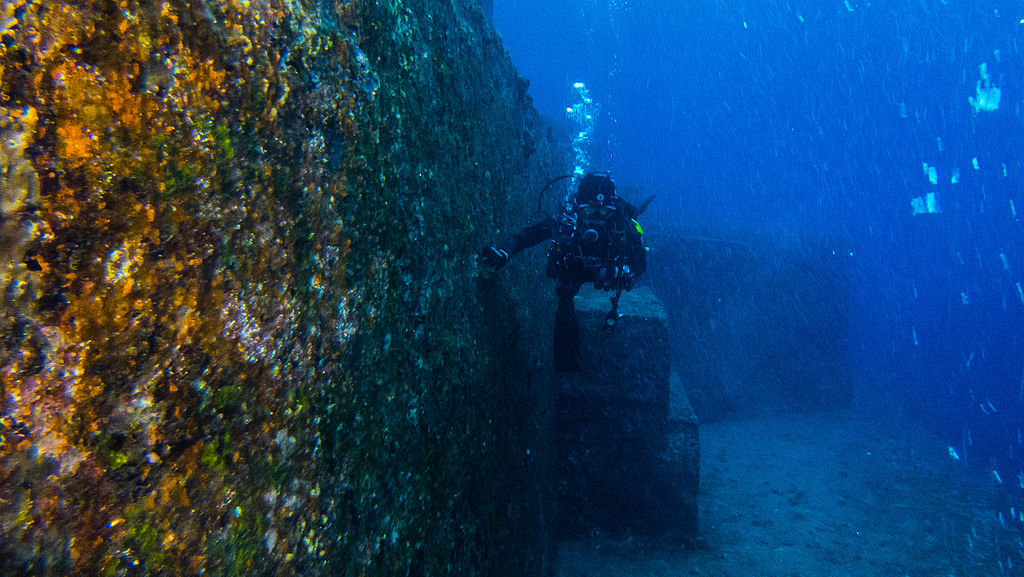 Vincent Lou, CC BY 2.0, Wikimedia Commons
Vincent Lou, CC BY 2.0, Wikimedia Commons
The Lost City of Heracleion, Egypt
Another destination for those who have dreams of Atlantis in their heads, this ancient Egyptian city is submerged beneath the Mediterranean Sea. Alongside the remarkably preserved statues and temples of this ancient port city, visitors may be lucky enough to witness seahorses and octopi while diving.
The S.S. President Coolidge, Vanuatu
The Coolidge was a luxury liner sunk off the coast of Vanuatu during the Second World War. Where it once hosted ocean-going tourists, the wreck is now home to coral reefs and a multitude of ocean life. Divers can explore the rooms of the wreck alongside the ocean creatures who reside there now.
Kailua-Kona, Hawaii
While all of Hawaii offers amazing diving and snorkeling, this particular destination has a unique experience to offer the brave aquanaut: a night dive with manta rays. The rays regularly make their way through the Kailua-Kona waters as night falls, and are drawn to the plankton in the area, providing an other-worldly and memorable time for divers.
Richelieu Rock, Thailand
A slightly more turbulent dive site, this area of the Andaman Sea is home to more soft coral than hard coral due to strong ocean currents. Richelieu Rock is also known for its mammoth Whale Sharks, one of the largest species of fish on the planet.
Devil’s Den, USA
Florida’s Devil’s Den is a collapsed cave system that provides a unique diving and snorkeling experience. Illuminated by natural light, the water maintains a balmy temperature year-round. The clear water allows tourists to encounter otherworldly limestone formations, as well as the occasional fossil!
HMS Thistlegorm, Red Sea
Another veritable underwater museum, this vessel was sunk during the Second World War. It still contains some of the cargo it was transporting, including motorcycles and trucks, and is sure to fascinate divers who appreciate some history with their underwater tourism.
Molokini Crater, Hawaii
Located some way from the Hawaiian coast, the Molokini Crater is a volcanic crater that caters to both advanced and novice divers. Tropical fish and coral reefs share this space with reef sharks and other large ocean creatures, and even the journey to the site itself is full of unforgettable views.
The Maldives Underwater Hotel, The Maldives
While many resorts in The Maldives have their own coral reefs, one resort in particular stands out. For those who aren’t totally comfortable with strapping on a snorkel or oxygen tank to witness the wonders of the underwater world, the Maldives Underwater Hotel provides accommodation 16 feet below sea level, surrounded by the beauty of the sea.
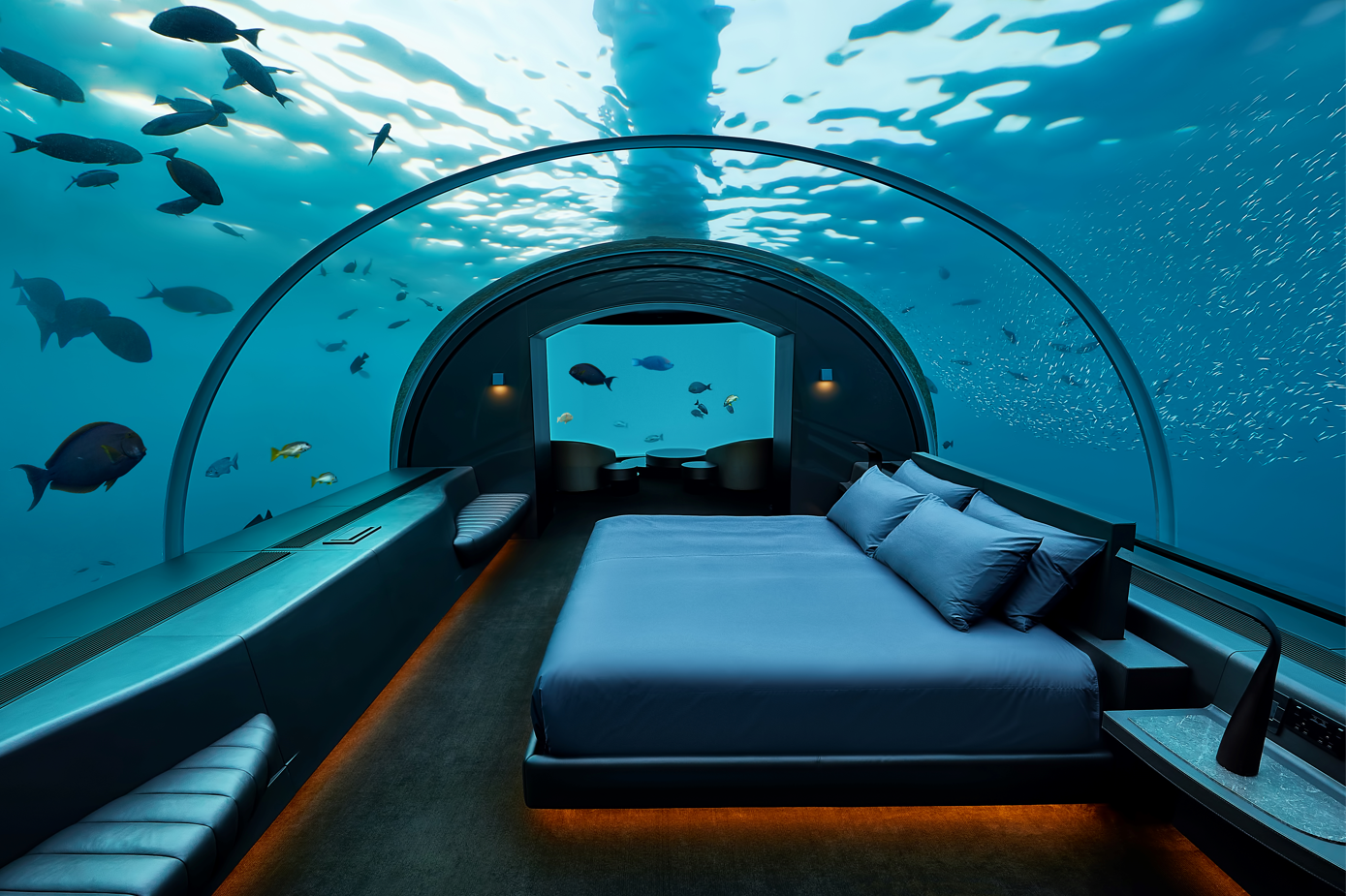 Tyler, CC BY-SA 4.0, Wikimedia Commons
Tyler, CC BY-SA 4.0, Wikimedia Commons
Christ of the Abyss, Italy
This remarkable sculpture was placed 56 feet below the surface of San Fruttuoso Bay in 1954 and has since then become a popular dive site for tourists in Italy. This sculpture sits in the warm waters of the Italian Riviera and is said to offer protection to those who dive and sail in this part of the Mediterranean.
Fathom Five National Marine Park, Canada
Located at the top of the Bruce Peninsula in Ontario, Canada, Fathom Five boasts 24 diverse shipwrecks open to scuba divers. The wrecks are surrounded by cool, clear waters and unique geological formations, making this a prime diving destination for aquatic tourism.
Bahía Culebra, Costa Rica
This dive site has, sadly, experienced a great deal of decline over the last few years due to climate change and increased acidity in the local seawater. Divers in this area can take part in conservation activities like installing coral nurseries to assist in preserving and repairing the damage suffered in the area.
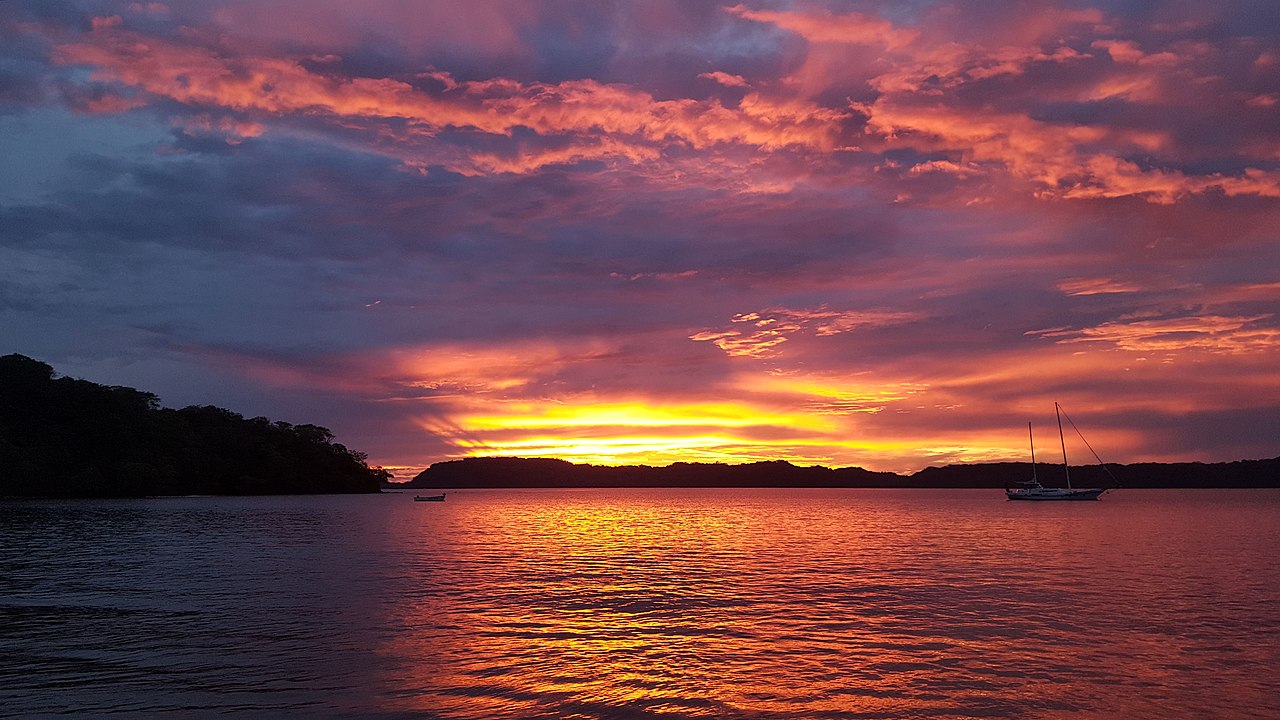 Federico Mata, CC BY 3.0, Wikimedia Commons
Federico Mata, CC BY 3.0, Wikimedia Commons
Kokomo Island, Fiji
This incredible sustainable travel destination offers the beauty of the Great Astrolabe Reef and Solo Reef, as well as the cave-diving site Grotto. The sites are monitored by the island’s government and marine biologists to ensure a safe and protected experience for divers and ocean life alike.
Nosy Komba, Madagascar
Nosy Komba, also known as “the island of the lemurs”, offers tourists the opportunity to take part in conserving the amazing island and underwater environments. The Madagascar Research and Conservation Institute offers opportunities to help with coral reef restoration and the Turtle Cove research center focuses divers attention on the plight of sea turtles in the area.
Quirimbas Archipelago, Mozambique
Home to Africa’s largest marine protected area, this UNESCO World Heritage site consists of 32 islands of exceptional beauty and cultural importance. Divers can experience coral reefs, coastal mangrove forests, and all of the wildlife that congregates in these places. Mozambique’s coastal waters are also a popular surfing destination.
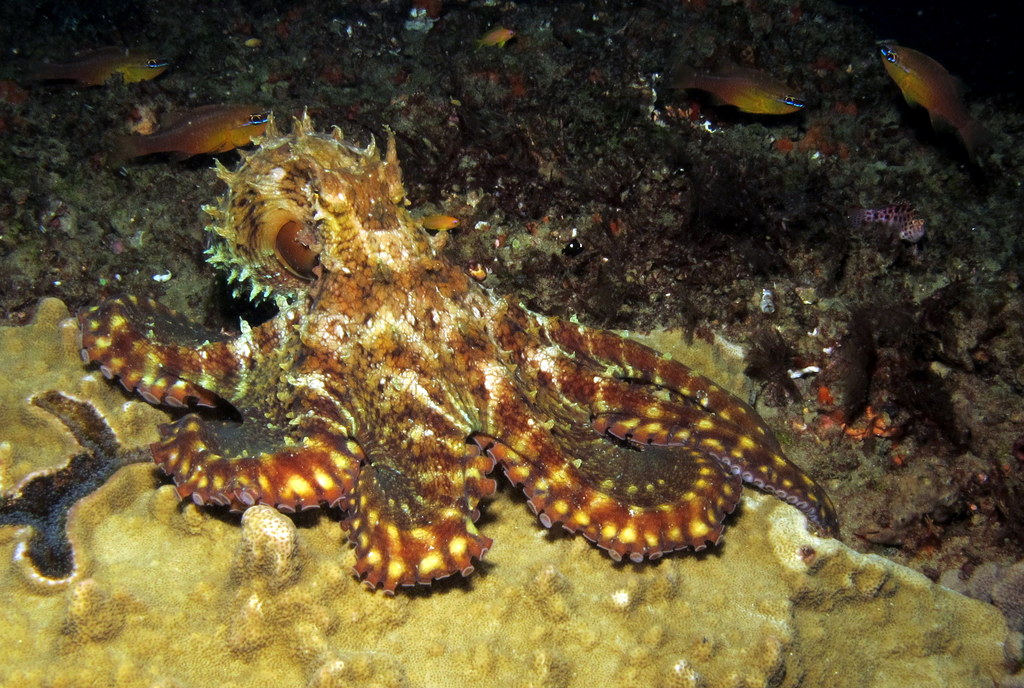 Derek Keats, CC BY 2.0, Wikimedia Commons
Derek Keats, CC BY 2.0, Wikimedia Commons
Malapascua, Philippines
Another site that has sadly suffered from damage due to unsustainable fishing and climate change, Malapascua is one of only a few sites where divers can see Thresher sharks cleaning parasites from their skins. Resorts in the area have become very conscious of their impact on the environment, and teach divers how to be more respectful and careful in these fragile ecosystems.
Seychelles
One of the smallest countries in Africa, almost half of this island is recognized as a protected national park. As an island, it boasts some species native only to this area, both above and below water. The island’s ecological health is monitored by the Island Conservation Society, and visitors can participate in the society’s efforts to maintain the health of the parks.

